General Insurance Blogs, Articles & Updates by - Magma HDI
Have us call you
- RENEW YOUR POLICY
- BUY NEW POLICY

Here are a few safety measures that parents should ensure when sending their kids back to school
With the COVID-19 situation getting relaxed, the world is returning to the way it used to be. As per the recent orders from several State Governments, schools have been granted permission to reopen and function regularly. It means your child’s back-to-school days are here again after a long pause. But things are not the same as they were before COVID-19. Here we have compiled a quick list of important safety measures to ensure when you are sending your kids back to school.
1. Make sure school staff are fully vaccinated:
Before sending your child to school, ensure that the school follows the COVID-19 protocols and that all the school staff are fully vaccinated. If not done, we recommend that you avoid sending your child to school. As a parent, you should ensure that the school staff and the authorities are vaccinated and show no flu or cold symptoms. Always check this with the authorities before sending your kid to school.
2. Educate your child about the safety norms:
Before you send your child out in any public space, give them enough information about the hygiene and safety measures they must follow. Sit with your child and explain the infection and how it affects health. Teach your children how to maintain the appropriate Covid behaviour in school. For example, they should know how to wash their hands properly with soap, responsibly use sanitisers, and maintain a safe physical distance from others.
3. Prepare a kit for your child:
With the pandemic situation being so uncertain, it is suggested that you are ready for what is to come. So, for this, make sure that you provide your child with all the safe belongings they will need while going to school. Prepare a kit for them, including a sanitiser, 3-4 disposable masks, an antiseptic soap bar, a spray sanitiser for benches and tables, and a pair of surgical gloves. While preparing a safety kit, make them aware of how and when to use it and dispose of the used masks or gloves.
4. Get in touch with school authorities:
Before you start planning to send your child to school, you must first ensure that the school authorities have taken strict cleanliness drives and only call the fully vaccinated staff. As a parent, you have to confirm that they have proper standard operating procedures for sanitation purposes and the campus is clean and hygienic. After questioning the school authorities, if you find that they do not have these guidelines in place, you should consider not sending your child to the school until they do so.
As a parent, sending your kid back to school after the pandemic brings a lot of fear. You never know where your kid is touching, sitting, or who they are getting in contact with. Therefore, take adequate safety measures to ensure your child stays healthy. Moreover, to secure your children’s health during the crucial pandemic, you must have reliable health insurance. Investing in online health insurance provides you with premium benefits to cover the medical bills. As the saying goes, precaution is always better than cure. Take the precaution today!
Click HERE to get the best deals on online health insurance.
Disclaimer: The information provided above is for illustrative purposes only. To get more details, please refer to policy wordings and prospectus before purchasing a policy.

Top seven scenic driving routes of India to experience a memorable road trip
With the huge influence of Bollywood films, the idea of road trips has prompted strongly among India's youth. Air and train travel just cannot justify the excitement and adventure of road travel. They are a fantastic way to treasure the journey over the destination.
We all saw our share of the unpredictability of life during this pandemic time. Now that the economies have finally opened and the nation breathes, a road trip is an excellent idea to heal your soul. A road trip allows you to tailor your itinerary as per your preferences.
India has numerous picturesque highways where you can roll down the windows, blast the speakers and sing your favourite songs with your friends and family. We’ve put down seven handpicked routes in India to take your four-wheeled companion on an adventure of a lifetime.
1. Bangalore to Ooty:
An escape from Bangalore to Ooty will surely lift your spirits if you are a nature lover who enjoys long drives. The trip is both adventurous and scenically pleasing. You'll come across misty waterfalls, quiet creeks, and rolling green hills as you travel through this route.
2. Chennai to Munnar:
From woodlands brimming with exotic biodiversity, tea and rice plantations to villages and towns bursting with all the hues of life. And the magnificent temples give an excellent example of India's rich architectural past that has been there for many centuries. Chennai to Munnar is a route to look forward to.
3. Manali to Leh:
Famously referred to as Mecca of bikers. This route is also great for driving. It takes you through the beautiful valleys of Himachal Pradesh. You’ll come across a lot of lakes and monasteries along the way as well.
4. Delhi to Nainital:
From the capital of India to the valley of lakes! The treasures of beauty on this route are many and varied. You name anything, and you'll find it here, from exquisite natural beauty to ancient relics. This road trip will surely feed the adventurer inside you.
5. Mumbai to Goa:
The ‘Dil Chahta Hai’ route! Nothing compares to travelling from Mumbai to Goa via the Western Ghats if you enjoy driving. Within a few hundred kilometres, the scenery changes from skyscrapers to shades of green. This route is a visual treat, with blankets of verdant and countless rivers, creeks, dams, and waterfalls dotting the landscape. Coconut trees will start multiplying as you draw close to the state of Goa once you're there. And, you know what to do because what happens in Goa stays in Goa!
6. Darjeeling to Pelling:
On this route, rich tea plantations, beautiful mountains, and gorgeous views on all sides are a treat to the eyes. Visit a tea garden and drink a fresh brew for an instant caffeine boost. The highway is well maintained, providing a pleasant ride altogether, and is lined with various eateries that serve delicious food.
7. Chennai to Pondicherry:
This route, also known as the East Coast Road, is another mesmerising road that should be on your bucket list. This route is one of the finest road journeys in India and is worth checking out for its beaches and lakes. It has 14 hairpin bends, each named after a famous Tamil poet. The track is made even more beautiful by the superb road upkeep and the stunning surroundings.
Give yourself a break from the daily hustle and discover the joy of hidden pleasures through travelling. Through these different routes, we get a chance to explore the best of our nation, right from vibrant culture to the variety of food. But, it is essential to have an ideal car insurance plan and check for your car insurance renewal before heading off on any road trip. Car insurance renewal is a financial duty, and keeping it up-to-date can provide several benefits to you and your valuable possession.
Click HERE to get the best deals on car insurance.
Disclaimer: The information provided above is for illustrative purposes only. To get more details, please refer to policy wordings and prospectus before purchasing a policy.

Here are a few benefits of using biker jackets while riding
Bike riding is one of the most popular activities, especially among the younger and enthusiastic generation. But, riding can be enjoyable only if it is practiced safely. Safety is paramount, and while riding a bike, there must be no compromise. Even if you are travelling short-distance, you need to have all the riding gear to keep you safe.
One such crucial riding essential is the biker jacket. They come in different price ranges, with various features, sizes, and materials from multiple brands that have created their value in the world of bikes and motorsport. But why is a biker jacket important? Here are a few benefits of using biker jackets while riding. This blog will make it easier to understand its importance. Read it till the end.
Advantages of using biker jackets are.
1. Safety is the top priority:
Biker jackets protect your body from various temperatures you might be riding in. They can safeguard you against skin damage or sunburns due to excessive heat and driving under the sun. They can even save you against the cold weather as they are pretty thick, and the material helps you withstand the winds.
Some biker jackets are waterproof, protecting you against the rain. The jackets have extra padding (especially in the shoulder and elbow region), which cushion your body against any injury in case of an accident.
2. Comfort is everything:
Biker jackets are easy to wear, and you don’t have to worry about discomfort when you put them on. And since you get them in various sizes and materials, you can choose according to your comfort and requirements.
3. Style is a factor:
Biker jackets have a certain sense of style. They complete the ensemble of a rider and give you a feel of professionalism and passion. As the outfits are important, they give you the confidence to accomplish a job. And biker jackets provide you with a feeling of an experienced rider and increase your style quotient. Consider purchasing a nice biker jacket as an investment in a statement piece that you can pull off for years to come.
4. Easy maintenance:
Biker jackets are usually made of materials that don’t need high maintenance or frequent exterior washing. They are generally waterproof and can easily wipe clean. You don’t need to wash it every time, but you can also opt for dry cleaning services to remove dirt and sweat.
These are a few benefits of using biker jackets while riding. Other riding gears that you need to include are motorcycle helmets, boots, pants, and gloves. These accessories keep you safe, protect your body against injuries in unfortunate situations and complete the rider ensemble.
Travelling on your bike can only be possible when you maintain it properly and protect it against damages in unprecedented circumstances. If not, it can put you and your bike at risk. Therefore, purchase bike insurance that provides you financial protection in the best way possible, and covers the expenses on your bike under challenging times.
Click HERE to know more about buying bike insurance.
Disclaimer: The information provided above is for illustrative purposes only. To get more details, please refer to policy wordings and prospectus before purchasing a policy.

Following are the ways to avoid the breakdown of trucks
Vehicles breaking down during a journey can be highly frustrating for any driver. It can be even more stressful when you're driving a heavy-duty truck loaded with precious cargo and having a deadline to meet. The vehicle breaking down midway is the worst nightmare for any truck driver. Repairing the truck and replacing damaged parts can also be a huge stress. And additional costs like towing and customer service can send you over the edge.
The truck's maintenance and expenses towards the breakdown and accidents can be hectic unless you have reliable online motor insurance that secures your vehicle's engine and overall functioning.
Following are the preventative measures that will take your maintenance game to the next level and help reduce or avoid the chances of a breakdown.
1. Check the tyres:
Tyre problems account for a large number of truck breakdowns. You must inspect the air pressure of your tyres regularly. Underinflated tyres are more susceptible to blowouts which can be tremendously risky. Inappropriate tyre pressure can wear away fuel economy and the tyre's longevity. The tyre pressure must also be regulated as per seasonal changes and the terrain the truck is going to drive on.
2. Check your brakes:
The daily heat, pressure, and friction that the truck undergoes can cause several parts to wear down. Brake failure is one of the prime reasons for road accidents. Before and after every assignment, the truck must be inspected for any damage caused to the brakes.
Moisture and contamination in the air supply and control system, leakage of air pressure, imbalance in the pressure and timing of the brake system, and external corrosion are some of the primary causes of brake failure.
3. Maintain the engine oil and coolant levels:
While it is best to stick to the manufacturer's recommended maintenance schedule, the driver must check if the engine requires it from time to time. The oil and coolant are integral in the smooth functioning of the truck's motor. While you can secure your vehicle by purchasing online motor insurance, getting these fluids serviced regularly is imperative.
4. Inspect the electrical system:
A failing electrical system can easily backfire and result in several costly repairs. You must regularly check the truck's battery, wires, and cables. Ensure that the battery is charged and is in good condition, as a malfunctioning battery can harm other vital parts of the vehicle. Get the wires and cables reviewed by a mechanic as the everyday heat and friction can wear them out.
5. Keep your truck up-to-date:
Over time, even a maintained truck becomes unreliable due to intensive wear and tear to its mechanism, parts, and engine. It is vital to replace your vehicles and upgrade to substantial models to avoid future breakdown expenses.
These are the few key things to keep in mind when inspecting your truck. Ensure you examine all these points before taking your truck on the road. While it is impossible to completely evade your truck from breakdowns every once in a while, following the above steps can go a long way as a preventive measure.
Lastly, invest in reliable online motor insurance to provide an additional layer of safety to your truck and efficiently manage the expenses required in its repair and maintenance.
Click HERE to buy online motor insurance.
Disclaimer: The information provided above is for illustrative purposes only. To get more details, please refer to policy wordings and prospectus before purchasing a policy.

Know about these useful ways to minimize jet lag
Your luggage, along with clothes and other travel items, brings a lot of excitement for the trip. But one baggage that comes with flying long distances is “jet lag”, also called desynchronosis or circadian dysrhythmia.
People travelling across several time zones have observed that the different environmental conditions drive their internal clocks out of order. As a result, they face issues while sleeping, which causes dullness and irritation. Other indications of jet lag include fatigue, headache, stomach problems, and lack of concentration.
Your body is naturally synchronized to a 24-hour cycle-the circadian rhythm, and the body’s biological functioning, hormones, and temperature rise and fall according to this alignment. However, jet lag disrupts this clock. On an average, it usually takes a day to adapt to the different time zones. But, the older you get, the longer your body takes to adapt to the change.
Now that we know how jet lag affects your body, here are some ways to minimize it.
1. Rest on the plane:
If you are travelling east and into a brand-new day, try to get quality sleep on the plane. Why? Because eastward travel cuts short your arrival day compared to travelling west which gives you additional hours to adjust to the new time zone. Consider carrying eye masks and earplugs to reduce the light and noise and have a sound sleep during your flight.
2. Night time arrival? Try to stay awake:
You catch up on your sleep upon arrival so that you can wake up the following day naturally, therefore easing into the new time zone.
3. Choosing flights strategically:
Selecting early evening arrival flights helps you stay awake until bedtime in your new location. This will smoothen your adjustment into the time zone. Plan your journey in advance to avoid the last-moment hustle to get the desired flight ticket.
4. Power naps are a big yes:
Sleepy but worried about jet lag? Fret not. Take a power nap for 20-30 minutes and give yourself the rest you need. This can do wonders, especially when travelling to different time zones.
5. Plan ahead:
If you have an important meeting or function to attend, schedule your trip a little early to adjust to the new time zone to avoid any jet lag-induced inconveniences on the D-day.
6. Say no to coffee:
Avoid consuming alcohol or caffeine a day before and on the day of your flight. These beverages can hinder your body clock and affect your sleep cycle. They might make the symptoms of jet lag dreadful for you.
As a traveller, unforeseeable circumstances can interfere with your travel arrangements. You could plan everything in order, yet some last-minute changes are bound to occur. To avoid getting caught up in such a hectic situation and losing money and peace of mind, make sure to purchase general insurance to protect your travel against cancellations, delays of flights, or baggage loss. Purchase your insurance from the best general insurance company to secure your travel dreams and make unforgettable memories.
Click HERE to know more about the general insurance company where you can find an insurance plan for your family.
Disclaimer: The information provided above is for illustrative purposes only. To get more details, please refer to policy wordings and prospectus before purchasing a policy.

Let's understand the merits and demerits of cloud storage for businesses
Cloud storage has revolutionised data management for businesses. Instead of storing vast amounts of data on hard disk drives, cloud storage makes it easier, more secure, and accessible for people to retrieve and work with the data. Several businesses today use cloud services extensively for storage purposes. With more advancements in cloud storage systems, more individuals and organisations will connect to these services.
Are you wondering if using cloud storage is the right choice for your business? Don’t worry. Let’s understand the merits and demerits of cloud storage for businesses through this blog.
Let’s have a look at the merits first.
1. Dependable:
Cloud storage is a reliable option for storing and upgrading data. You promptly get updates and other relevant notifications.
2. Centralization of data:
Keeping all the data in one location makes it easier to access. According to the requirements, you can access the files and the projects anytime remotely.
3. Secure:
Cloud storage is a better, more secure, and dependable option than computing and storing data in hard disk drives, which possess the threat of virus attacks and can corrupt your desktop, laptop or network without any warning.
4. Capacity:
Cloud storage has a massive storage capacity. And if you need more storage, you can purchase the up-gradation plan according to your requirements at very affordable prices.
5. Accessible:
Data is always accessible to the people within the enterprise through the cloud storage exclusive access option. Easy access helps achieve top-notch productivity and efficiency due to the ease of contact and approach.
Other advantages of cloud storage include ease of backup, smooth and quick deployment and functioning, secure communication channels, etc.
Now that we have looked at some advantages, some disadvantages would help put the facts and features of cloud storage in perspective.
Some demerits of cloud storage are.
1. Connectivity:
Since everything on the cloud functions using the internet, a lag in the speed or other network issues can restrict your access and affect your work and productivity.
2. Support:
Customer support and services provided by the providers are often inefficient and insufficient. Frequently asked questions and online help don’t always address issues businesses might have.
3. Breaches:
Third-party cloud service providers could access confidential information about the business. Hackers have malicious intent and can quickly access this data and cause damages if you haven’t chosen a reliable service provider.
4. Agreement:
When switching between cloud platforms, an organisation can face severe problems due to incompatibility between two providers.
5. Authority:
Cloud services run on remote servers owned and operated by service providers. You have very little say over the service provider’s decisions regarding executing new features or addressing current issues.
Other disadvantages of cloud storage for businesses include reliance on various platforms, cost variation, diverse performance, instability, technical issues, etc.
That’s a wrap on the merits and demerits of cloud storage for businesses. Hopefully, this will help you make a decision. Always keep the benefits and drawbacks in mind while evaluating the consequences and effects.
It is essential to get your business insured against damages. Companies and individuals can explore various options and purchase a public liability insurance policy to protect the business or provide compensation in case of any damage to the information stored on the cloud server.
Click HERE to know more about public liability insurance policy.
Disclaimer: The information provided above is for illustrative purposes only. To get more details, please refer to policy wordings and prospectus before purchasing a policy.

Here are a few best tips for ladies to drive a car during pregnancy
Pregnancy is a challenging time. Many nurturing, care and precautions ensure that the baby and the mother stay healthy. A lot of support is required from the family during the pregnancy. And it is essential to keep the mother happy as these things can eventually affect her mood, hormones and safeguards the baby’s health and wellbeing.
You cannot risk the slightest ounce of things. Women take care of many things and go through multiple challenges while carrying the baby. They have to curb many activities, food, drinks, etc., to ensure that the baby’s health doesn’t get affected. A lot of sacrifices come across on the journey of a to-be-mother.
But, you also need to bust the stereotypes and myths that pregnant women cannot drive. They just need to be extra careful to ensure they don’t cause any harm to themselves and the baby or end up over-exerting themselves by driving around for the chores.
Are you looking for some pointers on how you need to be careful about driving a car during pregnancy? Here are a few best tips for ladies to get started.
1. Avoid jerks:
You might be driving through a road that is in poor condition or under construction, and there is a lot of debris lying around. Make sure not to panic or speed up. You need to minimise the risk of jerks and bumps. Be calm and steady. Jerks and high speeds can trigger nausea in pregnant women since they are highly prone to motion sickness.
2. Comfortable position:
Your back needs to be well-rested. Do not force yourself to sit upright as it might put a physical load on your belly, affecting the baby and posture. Lean back your seat to a convenient position that makes it easy to drive and causes no stress on your back, belly, or chest.
3. Breaks are important:
You cannot run the risk of clots or swelling in your feet and palms. You can get out of the car, stand, and stretch as much as possible. Consult with a doctor about postures. Avoid experimentation during this crucial time.
4. Comfort essentials:
You can use a seat pillow, back support, or a neck pillow according to your choice and convenience to support your body and stay comfortable during driving. These handy and supportive equipment help your body retain the posture without putting too much stress on your body. This would eliminate the chances of discomfort or putting any physical pressure on the baby.
5. Artificial fragrances are a no go:
You should eliminate any weird and stale-smelling gases before you start driving the car. Roll down the windows or blast the a/c to ensure there is no hint of stale smells. Staying in the presence of such gases can cause detrimental effects on the baby. Avoid using artificial car fragrances too. They contain toxins and chemicals which can have adverse effects on the health of the pregnant lady and the unborn child.
That’s a wrap on a few best tips for ladies to drive a car during pregnancy. Also, make sure that you carry a complete kit with pregnancy and delivery essentials for an emergency. You also need to ensure that your car is well maintained to avoid any troubles while the ladies drive the vehicle during pregnancy.
Purchasing car insurance would help you protect your vehicle against financial damages. Do your research and browse multiple options and buy the one which provides you with the best car insurance price in India and caters to your needs.
Click HERE to know more about where you can find the best car insurance price in India.
Disclaimer: The information provided above is for illustrative purposes only. To get more details, please refer to policy wordings and prospectus before purchasing a policy.
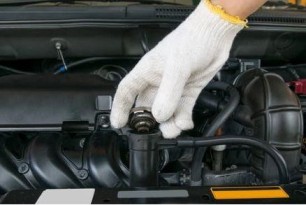
Learn about the appropriate ways of disposing the automotive fluids and chemicals
Toxic waste should not be thrown in the trash, flushed down the drain, or dumped in the yard. Instead, you must dispose of these liquid wastes to avoid damaging the environment, groundwater contamination and save yourself and others from the polluted surroundings.
In this post, we have provided ways to dispose of automotive fluids and chemicals safely.
1. Used engine oils:
These fluids can contaminate millions of gallons of groundwater and disturb pedogenesis. So, for the appropriate disposal of these oils and recycling them, you must follow these simple methods.
• Store all the used oils: If you change engine oils frequently, you must have a separate container that holds all the used oil. Most retailers sell their oils in a reusable container, making separating and storing the used oil easier. Once you have sorted the oil, you can return it to the dealer after labelling it as "WASTE OIL." Your retailer will then recycle the oil for the petroleum industry or use it in furnaces for burning purposes.
• Recycling the waste: Once you have drained the used oil from your vehicle, you can use it for oiling your cycle chains, motor chains, or you can use it for other minor household purposes.
NOTE: Do not use waste oil in any vehicle. This will damage your engine and lower the performance of the car.
2. Antifreeze or Coolant:
Initially, you have to drain out all the coolant in a clean pan from your radiator without spilling a single drop of it. Once you have done that, store the coolant in a tightly sealed bottle at a place away from children. To recycle used coolant, you can give it to a mechanic or a car utility shop.
Many shops have machines that recycle the used coolants by filtering out the glycol from the previously used coolant. They add specific additive packages and solvents that turn it into a new coolant. After this process, all that is left is a teaspoon of sludge that can be disposed of with the other insoluble particles.
But there is a catch here: you will have to ensure that no other fluid is mixed with the coolant while transferring it. Even a single drop of oil or other substance will make it nearly impossible to conduct the recycling process.
3. Brake fluids:
Disposing brake fluids is easy and does not require much effort. All you need to do is collect all the brake fluid in a container and keep it in the open air. As the brake fluid is alcohol-based, it will evaporate in two days. As a precautionary measure, make sure that you keep the container away from the reach of pets, children or a source of fire or ignition.
The chemical fluid used in cars can be fatal for the environment. Once these chemicals are mixed into the atmosphere, they can disturb many living organisms' and adversely affect the ecosystem. Not just this, if these fluids make their way into any other part of your vehicle, they can cause severe damage. The repairing of the damaged parts can drain your pockets significantly. However, you can avoid this by investing in a car insurance plan that will cover the expenses of the repair work and servicing. Get online car insurance to avail the benefits of policy add-ons for financial freedom.
Learn more about the benefits of online car insurance HERE .
Disclaimer: The information provided above is for illustrative purposes only. To get more details, please refer to policy wordings and prospectus before purchasing a policy.
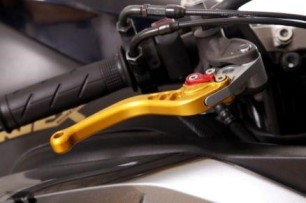
Let's understand the terms wet clutch and dry clutch
Petrol engines do not create much power at low rpm; they must rotate quickly before delivering enough power to the wheel. The clutch is a device used to gradually and smoothly introduce power into the engine.
Motorcycle companies provide two types of clutches in their bikes- a wet-type and a dry-type. Today's blog will give you all the information on both types.
How does a clutch work?
Before we get into the types, let's understand how a typical clutch works. Consider two plates, one attached to the engine and the other to the gearbox. There is no contact between the engine and the gearbox. When they come into contact, the friction allows a transfer of power. When the force is increased, the amount of power transferred increases correspondingly.
Now that you know the functioning let's get into the types.
Dry Clutch:
A dry-type clutch is not immersed in liquid and engages by the principle of friction. The clutch plate is located outside of the engine housing. This implies it is in direct contact with the air and receives no lubrication. Since the plate gets heated due to friction, the dry-type clutch is usually bigger to increase the surface area of the clutch plate for effective cooling via air.
Essential things to know about a dry clutch:
• The torque transmission of Dry Clutch is better due to the absence of oil.
• Dry clutches are typically single-plated.
• The noise in a dry clutch is greater and lasts longer as wear and tear increases.
• Dust particles can gather in the clutch's casing.
• The life cycle of a dry clutch is typically shorter.
• A dry clutch has a high repair demand and expense.
Wet Clutch:
Wet clutches, as opposed to their dry counterpart, are coated with engine oil, allowing the clutch plates to cool. As a result, wet clutches withstand more significant damage. They are quieter at rest, making them ideal for stop-and-go traffic.
The presence of lubricant lowers the torque transmitting capacity due to a lower coefficient of friction between the clutch plates.
Essential things to know about a wet clutch:
• A wet clutch plate(s) is found within the engine housing.
• Wet clutches are employed in high torque circumstances where friction levels are high.
• Wet clutches have substantially less wear and tear.
• The oil filter in the wet clutch casing removes dust particles.
• The life cycle of a wet clutch is often longer.
• A wet clutch has very minimal maintenance needs and costs.
Here is all you need to know about clutches. Most bikers prefer a wet clutch since it is ideal for most on-the-road sports bikes.
However, if you want all the horsepower that you get from an engine, as in the case of an all-out racing bike, you should opt for dry clutches. While you decide on the clutch type, opt for bike insurance online to protect clutches from unforeseen wear and tear in the long run. Reliable bike insurance will cover the expenses required for the repair work of your bike.
Click HERE to buy bike insurance online.
Disclaimer: The information provided above is for illustrative purposes only. To get more details, please refer to policy wordings and prospectus before purchasing a policy.

Best tips to make your home warmer during the winter season
From Christmas to New Year, winter is welcomed as the joyful season. Despite the temperature falling, this season spreads its charm throughout the world, and the reasons to celebrate don't end. Nonetheless, for all of the delight that the season brings, it also bears bitterly cold weather, as well as a burlap sack full of mist, wind, and snow. Pretty knitwear, beautiful sunsets, countless cups of hot chocolate, and crisp evenings indoors are all things to look forward to.
However, it is no pleasure to have the wind blowing through your house, leaving you with chattering teeth and ice-cold feet. Following is a list of the best ways to keep your house warm during these days of inevitable coldness.
1. Use thermostatic radiator valves:
These valves function by letting you schedule the heating to turn on at predetermined intervals, helping you save energy by only using it when required. In addition, the new smart thermostats let you operate remotely via your smartphone.
2. Make use of curtains:
Sunlight is free, hence take advantage of it. Open your curtains during the daytime for abundant free heat. Close your windows as it becomes darker to provide another insulating layer and preserve the heat in your rooms. You can also opt for heavy curtains to obstruct the cool breezes from getting in.
3. Make the most of your ceiling fan:
Consider placing a fan at the top of your stairway to drive warm air rising through the floors back down to you. If you reverse the flow direction of your fan, warm air will be blown back into the room. Set the fan speed to low for optimum efficiency.
4. Reorganize your furnishings:
Be tactical with your furniture arrangement and check whether the sofa or bed is blocking the radiator and preventing it from heating the entire room. Place frequently used furniture around any heat source to get enough warmth.
5. Use rugs to cover the flooring:
Having rugs and carpets in your home will naturally help in improving insulation. In addition, it is stylish to layer rugs, so you won't have to go for a single enormous pattern to cover a wider area, and your house will seem instantly warmer.
6. Replace your boiler:
If your current boiler is more than a decade old, it's probably time to upgrade to a newer, more efficient type. An old, outdated boiler may consume more power, increasing your electricity bill significantly. However, a brand new one is less likely to have any problems and will consume less energy to generate the same amount of heat.
Winters are challenging, especially if you live in the frigid regions of our country. These are some ideas to keep your home warm and safe during the cold season. However, apart from these tips, insurance is crucial to protect your home throughout the year and add value to it. Purchase the best house insurance India plans that meet your requirements and look for the best deals available to get maximum return on your investment.
To browse through our house insurance India plans, click HERE .
Disclaimer: The information provided above is for illustrative purposes only. To get more details, please refer to policy wordings and prospectus before purchasing a policy.

Merits and Demerits of consuming additional food supplements
Dietary supplements can be an easy option to provide your body with enough nutrients. Supplements fulfil your nutritional requirements, but they come along with their pros and cons. For example, many supplements have active ingredients that can adversely affect the body.
Here is a post that guides you about the different food supplements. To understand the merits and demerits, we will categorize the commonly used supplements in the market.
1. Dietary protein food supplements:
Protein is a macronutrient and the fundamental building block required to build muscles, maintain tissue, and boost the immune system. According to scientific research, every human need 0.8 to 2.2 grams of protein per body weight in kilograms.
Merits:
• You can carry these supplements anywhere. They are readily available in shakes, bars, cereals to provide on-the-go energy.
• Moreover, protein food supplements consist of certain micronutrients not often found in our daily food like EAA's, creatine, glutamine, etc.
• These supplements can help you reach your protein goal faster.
Demerits
• The downside of these supplements is that many people depend on them rather than whole food to fulfil their daily body's protein needs.
• Secondly, these supplements are promoted majorly for fitness industries, hence are expensive.
2. Vitamins and minerals food supplements:
Vitamins and minerals are crucial for our body's functioning. According to the body structure, every person has different needs for vitamins and minerals.
Merits:
• These supplements can be helpful if you have difficulties having wholesome food or consuming a calorie deficit diet.
• Suppose that you don't like eating food that is rich in nutrients. In this case, vitamins and mineral food supplements can work best for you.
Demerits:
• Consuming specific vitamins and minerals for a prolonged period can accumulate them in the body and later result in severe toxicity symptoms such as kidney stones and heart rhythm issues.
• Excess amounts of minerals like zinc, magnesium, iron can also have adverse effects on your health.
3. Calorie food supplements:
Calorie food supplements come in handy when suffering from a health condition. They will help you fulfil the daily calorie intake that you cannot take from the whole food.
Merits:
• These supplements are beneficial for individuals dealing with busy schedules, eating disorders, or suffering from any diseases. Here, calorie food supplements play a significant role when the nutritional intake changes.
• Fitness enthusiasts, children, picky eaters are highly benefited from calorie food supplements. Certain supplements like mass gainers provide you approximately 500-600 calories per 45 gm serving. This calorie intake is very accessible if you cannot reach your calorie goal.
Demerits:
• Having this form of food additive may add additional calories to your diet, culminating in the buildup of belly fat.
You might have understood the overview of food supplements. But, as we know, that excess of anything is harmful. Even excessive use of these supplements is not good. Before you start consuming any food supplements, it is always suggested to consult your doctor or physician to get the best possible advice.
Along with this information, it is crucial to safeguard your health against the possibility of any issues. Magma HDI's online health insurance plan is designed to meet your and your family's requirements by providing complete coverage against health-related concerns.
Click HERE to know more about the different types of online health insurance coverage.
Disclaimer: The information provided above is for illustrative purposes only. To get more details, please refer to policy wordings and prospectus before purchasing a policy.

Visit these most challenging biking destinations of India
A famous saying amongst bikers goes, "A bad day on a bike always beats a good day in the office." Whoever said that was surely familiar with the thrill and adventure of biking through treacherous roads and the satisfaction of conquering them. For bike lovers, nothing beats the anticipation and excitement of exploring new and challenging terrains.
In this article, we will take a look at some of the most popular biking routes in India.
1. Chandigarh-Manali-Leh:
This route is known as one of the most challenging biking routes in the world. The Chandigarh-Manali-Leh route is filled with picturesque views and difficult terrains. The road to Leh makes riders work hard for every kilometre. Extreme altitude and motion sickness will test your endurance and willpower. But the gift of the clear blue skies and the magnificent roads ahead make the struggle totally worth it.
2. Shimla-Spiti Valley:
This beautiful stretch of 430 kms is a mix of rugged tracks and broken roads, making it extremely difficult to travel. The roads are comparatively narrow, making the commute all the more challenging. It is extremely difficult for bikers to manoeuvre uneven terrains filled with rocks and gravel. However, the beautiful apple orchards, impeccable valley views, and peaceful monasteries are just a few of the many rewards you will find on the way.
3. Siliguri-Yuksom:
A relatively smaller commute, this unconventional route is often discussed among travellers for its under-maintained roads and uneven terrains. Adding to that are the many waterfalls that make it all the more difficult for bikers to navigate. What makes this journey remarkable is the unparalleled beauty of the landscape. The view of the mighty Himalayas is sure to give you the much-needed motivation while traversing through these roads.
4. Bomdila to Tawang:
Riding through the lush green hills, flowing rivers, and snow-capped mountains make it difficult to focus on the road. What makes it challenging is the extreme inclination of the hill. And the constant fog leaves the roads moist and can be dangerous to the riders. The upward climb is about 170 kms long and scales an altitude of about 4000 metres above sea level.
5. Guwahati-Khasi Hills:
The road between Guwahati and Khasi promises stunning views of lush green forests and red sand. On the way, you will come across beautiful waterfalls and living root bridges that are sure to be a memory you will cherish. The damp weather makes the road slippery and wet, and manoeuvring the sharp turns is crucial to steer safely through the hills.
These are some of the routes that promise a challenging bike trip with an excellent reward. Before setting out on your next trip to these places, don't forget to get your bike serviced. Riding through challenging roads can put extra load on your vehicle and cause extreme wear and tear. A thorough bike check-up before and after the trip can prove beneficial in the long run. Another tip to follow is to keep a checklist of all things needed for the journey, such as fuel, food, first aid, emergency lights etc.
To ensure the protection of your vehicle, invest in 2 wheeler insurance. Always remember that a 2 wheeler insurance is a safety net for all the expenses you will incur for the aftercare of your bike.
Click HERE to know more about 2 wheeler insurance.
Disclaimer: The information provided above is for illustrative purposes only. To get more details, please refer to policy wordings and prospectus before purchasing a policy.

Seven benefits of waxing your vehicle to keep it in a good shape
For some, vehicles are simply a method of commuting. But for passionate motor-heads, their vehicle reflects their personality. If you belong to the latter category, you'll always want your vehicle to look shiny. One of the best methods to achieve this is by keeping your vehicle waxed.
Even if you fall in the first category, the benefits of waxing are not something you should oversee. Merits of waxing range from preserving the paint to maintaining the car's value at its maximum potential.
Waxing is not very popular, and most of us are not familiar with the concept. But, keeping its advantages in mind, we have listed all the necessary information about it for your reference.
What is car wax exactly?
Car wax is a specifically designed combination of beeswax, carnauba wax, natural oils, and numerous petroleum refined products. It forms a protective layer atop the vehicle's body when applied.
How does it differ from car polish?
Car polish helps you remove scratches and swirl marks from the vehicles' body. Unlike wax, it does not prevent these scratches and swirls from happening in the first place. If the polish is the cure, then wax is the precaution.
Advantages of waxing.
1. Shields against scratches:
Waxing protects the vehicle's paint from unavoidable attacks such as slamming gravels and even microscopic scratches that are caused due to improper washing methods.
2. Shields from the wrath of the sun:
Ultraviolet rays from the sun interact with oxygen in the atmosphere to disintegrate the vehicle's paint at the molecular level. The wax coating slows down this process by acting as a barrier between the UV rays and the paint.
3. Shields from dust and bird droppings:
The coat of wax makes settling of dust and dirt difficult. It also blocks tree sap, bird droppings, and other impurities from adhering to the vehicle's paint. Bird's dropping may be an excellent fertilizer for farming, but your car's paint doesn't like it at all.
4. Protects your car's paint from rain:
Rainwater collects everything in the atmosphere on its way down. It is full of minerals that may wreak havoc on your car paint. As wax is an oil, it repels water. Rain (or any other type of water droplet) will bounce up and fall off your vehicle, leaving the paint unaffected.
5. Gives the vehicle the shine it deserves:
The oils in auto wax provide an incredible sheen to the paint, making it seem incredibly gorgeous! Furthermore, the wax covers the tiny defects on the clear coat making the vehicle's exterior appear newly painted.
6. Makes cleaning easier:
The protective coating of wax over the paint prevents anything from settling on the body. This smooth layer also helps clean as wiping and washing become more manageable.
7. Get a higher resale value:
Wax can lessen the amount of damage on a vehicle's body and help it look brand new for a prolonged time. You can get a higher resale figure than a vehicle that was not waxed at all.
Now that you're aware of all the advantages of waxing your vehicle, the drawbacks of not doing it should be obvious. If you don't wax your vehicle, you're merely allowing microscopic scratches to accumulate and perhaps compromising the paint to degrade over time. Furthermore, don't you want your car to be a head-turner when you take it out for a drive? We're sure you do.
However, while waxing adds a layer of protection to your vehicle, another excellent layer of protection to add is comprehensive motor insurance, which is not an option but a mandate. Buy your online motor insurance today and get the best benefits for your vehicle.
Click HERE to know more about online motor insurance.
Disclaimer: The information provided above is for illustrative purposes only. To get more details, please refer to policy wordings and prospectus before purchasing a policy.

Seven best activities to help the elderly stay active and fit
If you are someone with an older adult in your house, you are always concerned about ensuring they live an active and healthy life. Sometimes, being available for them at all times can be difficult. No one wants to put their parents, grandparents, or in-laws in trouble because of their busy work-life, and we understand that.
If you are looking for fun activities for the elderly in your house or for yourself, we have hand-picked the best seven activities that will keep older people active and fit to avoid health complications. With that, let's dive in!
1. Reading:
Reading is a popular hobby among adults. It helps them to spend their time by keeping their brain occupied. Reading magazines, short storybooks, comics, or poetry will improve their memory, sleep disorder, and knowledge. One can also indulge in reading workshops and events that bring plenty of socialization and enjoyment!
2. Gardening:
For those who enjoy outdoor activities, gardening at home is an excellent opportunity for promoting physical and mental stimulation. Keeping the elderly involved in gardening is the perfect opportunity to spend time outside and feel connected to nature. They can even try basic tasks such as watering, seeding, or raking.
3. Yoga and exercise:
Yoga is an excellent practice to keep your body healthy and mind at peace. It is the best exercise to maintain your muscles in good shape, especially for those who face issues with their bones and joints due to ageing.
In addition, exercising will keep the senses refreshed and improve strength and flexibility. Community groups and classes conduct regular yoga clubs or workout sessions to revitalize older adults. So, grab your mat and take a step closer towards a healthy life!
4. Games and puzzles:
Playing games or puzzles is a fun way to improve memory and focus. Playing games with family and friends can refresh the mind and give the elderly an opportunity to bond with their children and grandchildren. In addition, games like snakes and ladders, cards, jigsaw puzzles, etc., can keep the elderly engaged and improve their hand-eye coordination.
5. Creative activities:
Activities like singing, painting, sketching, basic knitting, etc., can help older people lift their mood and cheer their spirit. These activities will save them from boredom and let them discover their favourite pastime activity.
6. Passing time outdoors:
Travel has no age limit. You can go on a trip with your family members or friends to explore new places, cities, or even different countries for a change. Additionally, you can also look out for a travel group of older adults who are passionate about exploring places!
7. Pet therapy:
Older people share a great bond with animals and can get attached quickly. This will keep them involved in the daily chores such as taking pets to the walk, feeding, bathing, or playing around with them. Furthermore, a pet will be their all-time companion even when no one is around and help them reduce boredom and loneliness.
Seeing your parents grow into their old age is one of the most challenging things. But that's a part of life, and there's nothing we can do to reverse their age. Older adults need extra care. As a child, you can involve them in multiple activities that will boost their mood, health and keep their warm smile alive.
Increasing age invites diseases that can take a toll on the happiness of older people. If you do not have a good insurance plan for them, make sure to search for the best health insurance in India for parents. This will keep their health and well-being secured, so they focus just on enjoying their lives. Life is like a drink. Enjoy it one sip at a time!
Click HERE to buy the best health insurance in India for parents.
Disclaimer: The information provided above is for illustrative purposes only. To get more details, please refer to policy wordings and prospectus before purchasing a policy.

What do the motorcycle warning lights indicate, and how should you address them
We all know about the various traffic rules to abide by the motorcycle riders. As essential as following the traffic signals, learning and understanding all the warning signals that your vehicle gives you is equally important.
If you own a two-wheeler, you must be familiar with its parts and how every element contributes to the overall working of your vehicle. However, people often ignore maintaining or paying attention to the motorcycle's needs. Being too occupied with the hustle of daily life, you may neglect your motorcycle's deteriorating condition and continue using it in that state. This negligence can result in unfortunate occurrences.
What are the warning signs in a motorcycle?
Your motorcycle is designed to alert you of its needs and requirements. Every two-wheeler has a dashboard equipped with warning lights that flash as coloured symbols when a problem arises. While every two-wheeler differs, its dashboard typically consists of the speedometer, RPM meter, and fuel gauge. Next to these numbered dials are a bunch of warning lights that flash in various colours.
These warning lights in a motorcycle mostly follow the same system as the traffic lights to display the severity of the warning.
Blue or Green: the motorcycle's system is active and functioning correctly.
Orange: Something is malfunctioning and must be looked into as soon as possible.
Red: A defect has been detected in your motorcycle's system, and you must stop driving as quickly as possible.
Here are the few commonly found warning lights.
1. Engine temperature:
Regular usage of the motorcycle can overheat the engine. In this case, the engine's temperature rises, and the surrounding components are prone to damage. The dashboard will flash a red warning light in the shape of a thermometer to warn the rider about this overheating.
When this warning light is displayed, the best thing to do is stop riding the vehicle. It is essential to rest and let the engine cool down. Riding an overheated two-wheeler can be risky.
2. Oil pressure warning:
Oil is used as a lubricant in every motorcycle to reduce friction between its moving parts and gears. The oil pressure warning light will flash on the dashboard to alert the rider of low oil levels. Low oil pressure can damage your vehicle's engine and severely affect the bike's performance.
3. Engine management warning:
This orange warning sign is responsible for alerting you about a broad set of features that may be malfunctioning either collectively or single handedly. While the signal usually stops flashing after a few seconds of ignition, the vehicle could have issues involving its emissions, air intake, fuel, etc. Although you may have purchased reliable 2 wheeler insurance online, you must remember that riding the motorcycle, despite this warning, can be destructive for the bike and your safety.
4. The indicators:
These are green warning signs on the dashboard that blink when the rider clicks on the indicator while turning.
5. Neutral indication:
A green warning sign simply indicates that the bike's gearbox is in neutral gear.
It is important that you remember these warning lights are installed to protect you. You might have opted for 2 wheeler insurance online to protect your vehicle, but understanding the functioning of your bike and regularly maintaining it is your responsibility.
Click HERE to buy 2 wheeler insurance online.
Disclaimer: The information provided above is for illustrative purposes only. To get more details, please refer to policy wordings and prospectus before purchasing a policy.

Six effective ways to overcome the fear of driving
The same activity that brings joy to many can be a stressful experience for others. In several cases, the responsibility of controlling the wheel can be overwhelming to the drivers. Several people develop a freeway phobia every year due to accidents, which they find difficult to overcome.
Even though many drivers wish to get over their anxiety and feel optimistic about getting behind the wheel, they often feel lost about where to start. Here are a few practical tips that may help those that want to get back on the road and take charge of the vehicle.
1. Start driving around with a companion:
Having a trusted companion in a scary situation can help calm your nerves. The companion, be it a friend, spouse, or family member, can create a sense of safety and help you feel more confident while driving. Support from loved ones goes a long way while facing phobias.
2. Go for drives during the day:
Several individuals feel much safer outdoors during the daytime. Most road accidents are believed to happen during the night, which can be a nightmare for people who fear driving! In addition, driving during the day provides enough visibility that is sure to make you feel much more secure.
3. Make it a regular habit:
It takes time and effort to tackle the fear of driving. Improve your driving by practicing at regular intervals to strengthen your fundamentals. It is essential that you remain consistent in your efforts.
4. Inculcate relaxing techniques:
It can be difficult to relax your mind while facing your fears. However, relaxation techniques like breathing exercises and meditation right before getting behind the wheel can help control anxious feelings while driving.
5. Listen to calming music:
Music is known to influence our moods highly. While most of us are told that music can distract us while driving, it may be a rather soothing element. Listening to relaxing tunes at a low volume while driving can help take your mind off the fearful thoughts that may cloud you.
6. Keep a positive mindset:
Many individuals go through traumatic car accidents and suffer heavy losses, often even financial ones, as they lack auto or motor insurance. Having a positive mindset may not come naturally after such stressful incidents. We must train ourselves to alter a negative thought process with a positive one in such cases. Saying positive affirmations can drastically help develop a mindset that will help you overcome driving-related anxiety.
To sum it up, these tips may not dismiss away your fear of driving instantly, but they will help you build your confidence to a great start! To eliminate the fear of accidents and financial consequences, rely on an ideal motor insurance company to make your driving experience stress-free. Motor insurance will cover the expenses involved in the garage repair works of your vehicle. With consistent and regular efforts, you are sure to overcome your driving phobia. Practice hard until you ace it!
Click HERE to get the details about the motor insurance policy.
Disclaimer: The information provided above is for illustrative purposes only. To get more details, please refer to policy wordings and prospectus before purchasing a policy.

Visit these top destinations to enjoy the best ziplining in India
Ziplining is one of the most exhilarating experiences you can enjoy. Many zip lines can attain speeds of up to 100km/hr, depending on your body mass, slope, etc. If you are just starting out with adventure sports, ziplining is a safe and comfortable option.
India hosts various ziplining spots across the country. Being home to multiple landscapes, it also allows you to experience panoramic scenic views from each of these spots. Be it the lush green forests, vast golden desert, or the mighty rivers, ziplining in India has something for everyone.
In this article, we will look at a few of these places for your next ziplining adventure.
1. Rishikesh, Uttarakhand:
Rishikesh hosts various adventure activities, and ziplining is one of the most explored ones. You can experience this sport at the Shivpuri base. Surrounded by forests, the experience here is sure to be a memorable one. The place is open throughout the year, but it is advisable to skip the monsoon season.
2. Neemrana Fort, Rajasthan:
Neemrana is located close to Delhi, making it a favourite spot for tourists for weekend getaways. Gliding through Aravali hills and the rich history, the landscapes keep changing between magnificent forts and the mountains. Neemrana also hosts Tandem zipping for children aged 4-5.
3. Mussoorie, Uttarakhand:
Mussoorie is an adventurous retreat with an exclusive range of activities. The place hosts the highest zipline in the country at 600 feet above sea level. The birds-eye view of this hill station and the array of valleys and forests will be a novel experience while you glide down the line. The best time to visit is during the autumn or spring season for a pleasant experience.
4. Munnar, Kerala:
One of the most beautiful hill stations in the country and the hub of tea estates, Munnar is a famous ziplining spot amongst travellers. Amidst the green canopy and fresh air, you can zip over beautiful valleys and through different parts of the town. Enjoy the feel of the local life and nature all at once with Munnar's affordable ziplining spots throughout the year.
5. Kerwa Dam, Madhya Pradesh:
Kerwa Dam has earned its recognition as the longest and one of India's most scenic twin zip. You will start from a hill and travel above the mesmerising Kerwa lake. As you zip down from the hill, you will experience the winds gently kissing your cheeks, making it all the more thrilling.
These are just a few of the many spots that promise an excellent ziplining experience in the country. Consider taking a brief detour and enjoy these activities during your next vacation. Remember to wear comfortable clothes and shoes while ziplining and listen to the instructions carefully.
And most importantly, while you immerse yourself with the most liberating experiences of your life, consider looking into personal accident insurance plans that will financially safeguard you against any injury. It is always advisable to prioritize your safety over all else.
Click HERE to know more about personal accident insurance plans.
Disclaimer: The information provided above is for illustrative purposes only. To get more details, please refer to policy wordings and prospectus before purchasing a policy.

Hair Fall: Try these five methods to avoid unnecessary loss of hair
As per several studies and research, hair loss is one of the leading causes of stress in youth and adults. And vice versa, the stress of work and life is one of the primary reasons for excessive hair loss.
Unfavourable environmental conditions are another factor contributing to hair loss. The air pollution and hard minerals in water tend to ruin hair and skin quality, but there is no escaping these conditions.
Some hair loss issues can be due to hormonal changes. Mental or physical situations like childbirth (in women) can lead to hair loss too. Other causes include dietary problems, vitamins and nutritional deficiencies, underlying diseases, side effects of medications, alopecia, scalp infections, etc. Experiencing little hair fall in daily life is normal. But if it increases and is persistent for some time, you need to see a doctor.
But what can you do to avoid losing hair? This blog will discuss methods that can help you out. Try these five prevention methods to control unnecessary loss of hair.
1. Vitamins are essential:
Your diet should include supplements and food rich in vitamin A, vitamin D, vitamin C, vitamin B, iron, and zinc. These add nutritional values and increase the strength and retention capacity of your hair. They also help in the formation of hair cells and boost their growth.
2. Include protein:
Keratin is the hair protein and makes up most of the hair follicles. People having amino acid deficiencies usually suffer from hair loss. Ensure to consume a protein-rich diet. Foods like eggs, chicken, fish, milk products with low-fat content, etc., are rich in protein.
3. You must have heard about Biotin:
Vitamin H or Biotin processes the fatty acids in our body and is an essential component for maintaining the stages of hair formation. It is advised to consume three to five milligrams of Biotin. However, first, consult a doctor about the dosage and whether you require it.
4. Timely oiling:
Using coconut or castor oil for deep massages can help in increasing the blood flow and circulation in your scalp. This helps activate the pores and promote the growth of hair follicles. Oiling also helps strengthen the roots of your hair to prevent uprooting.
5. Using the right products:
Many shampoos and hair care products contain harmful toxins and chemicals that ruin your hair's health and quality. It is essential to use mild shampoos and conditioners in the right amount and wash your hair at equal intervals to remove all the dirt from your scalp and hair.
Also, remember that leaving your hair dry can lead to hair fall. Assess the nature of your scalp and hair while considering products and treatments. It is recommended to do a patch test before using a product. In case of irritation or dryness, stop using it immediately.
Some other hair fall prevention methods are:
• Use a wooden or steel comb.
• Avoid brushing your hair when it is wet.
• Minimise the use of heat on hair.
• Use safe and organic dyes.
• Take blood tests at equal intervals to check your nutritional levels.
These techniques will help you manage your hair care routine in an organised manner. Like hair loss issues, there can be other issues that may drive stress. Excessive stress can impact your health and cause unnecessary health problems. It is wise to invest in ideal health insurance to protect yourself against ailments. Stay up-to-date, and don't forget your health insurance policy renewal to avoid the policy lapsing.
Click HERE to learn more about health insurance policy renewal.
Disclaimer: The information provided above is for illustrative purposes only. To get more details, please refer to policy wordings and prospectus before purchasing a policy.

Six ways to reduce your lower back pain while riding a bike
Whether you ride as a passionate biker or for daily commuting purposes, it can be hard on your back. Riding for extended periods can make a rider's body stiff and affect their stance. If you don't maintain your riding position correctly, you might suffer severe back discomfort.
Little things, such as workouts to strengthen your back, taking breaks during long rides, and practicing proper posture, can help motorcycle riders with back pain conditions. Here are some ways to secure your back from suffering and reduce pain while riding a bike.
1. Fix your posture:
One way of avoiding back discomfort during riding is to be more observant of how you're seated and take a few additional steps to prevent backaches. For example, try to keep your back straight and avoid a hunching posture by lining up your shoulders over your waist and making a conscious effort to arch your shoulders a little backward.
2. Exercise to strengthen back and core:
Maintain your core muscle strength and lessen the pressure on your spine by doing back strengthening exercises regularly. A simple set of home exercises such as knee-to-chest stretch, lower back rotational stretch, shoulder blade squeeze, and sitting lower back rotational stretch, as well as yoga asanas like the Bridge Pose or Cat Pose, can help significantly.
3. Take stretching breaks:
Do some easy stretches at long traffic lights or in heavy jams during your ride. Or pull over for a rest and stretch if you're on a long journey. Basic stretches like rotating your neck and shoulders, arching your back front and backward, bending down to touch your toes, counter stretching, and relaxing your torso sideways will help to get relief from backaches.
4. Switch positions often:
A cause of chronic injury, such as back discomfort, is repeated, cumulative stress that causes tissue damage. Sitting in the same posture for extended hours raises the chance of developing risk. Give your body rest from time to time.
5. Pay attention to the amount of riding:
Back discomfort can sometimes be caused by doing too much too quickly. Since biking requires minimal effort, it's tempting to get carried away and ride longer than our supporting muscles are trained to handle. Take it easy on yourself and avoid impulsive travels.
6. Examine your riding style:
At last, your riding technique might induce an ache in the lower back. The tension on your back varies depending on the angle of your back while riding. Bikers who use giant gears, especially while ascending, may have lower back pain.
Regardless of our daily activities, looking after our spine is critical for everyone. As fun as riding is, it can also be exhausting with severe back pain conditions if not done correctly. Follow the above tips religiously to keep your back fit and avoid unwanted aches and pains. Just like your body needs attention, so does your bike. Before hopping on your bike, ensure that you have protected your two-wheeler with proper bike insurance.
To get the best bike insurance, click HERE .
Disclaimer: The information provided above is for illustrative purposes only. To get more details, please refer to policy wordings and prospectus before purchasing a policy.

These simple tips can make your house hunt easy and carefree
First of all, Congratulations! If you're reading this article, we assume that you're taking your first step towards buying a home. You already know the stress of finding an ideal place to call home, and with so much to consider, it's not an easy task for sure.
Delays can be exceedingly expensive in a growing infrastructure industry like India's. One cannot help but wonder, can we spend so much time hunting for a home? So, to help make your house-hunting process a bit easier and quicker, we've come up with some tips that will surely assist you in making a clear decision. Let's understand them one by one.
1. Identify your needs:
Question yourself; what do you expect and require from your property? Do you prefer a well-kept contemporary home, or would you settle for a renovator? Do you want an east-facing flat or one with a sunset view? The more you uncover early on, the sooner you'll be able to zero down on houses that fit your requirements.
2. Find an ideal budget and adhere to it:
Before going online to look at properties, examine your income and spending. What are you able to comfortably afford at this stage of your life? Set a price range that is compatible with your budget, and start exploring!
3. Figure out the location:
You already know that locations will undoubtedly affect the budgets. But, it will also affect your lifestyle as you'll be spending a majority of your time there. Figure out the commute from workplaces and schools and ensure that all the essential services are close by or near enough to reach in emergencies. Scout the neighbourhood and try to visit the shortlisted places at all times of the day. The idea is to learn all about the site and its surrounding area.
4. Take the help of the internet:
Okay, citizens of Digital India, it's time to put your gadgets to use. Look for properties online. Reading online reviews will help you compare many different properties at once and get a deeper insight into them. With a few clicks, you can even measure the distance from a property to any location, such as workplaces, hospitals, and schools.
5. Make a checklist:
When you begin visiting houses with an agent, the process can become frantic. You'll visit so many places that you might find it tough to keep track of them, add to that, the pressure from brokers and sellers for an offer. A checklist consisting of all criteria of properties visited, along with additional notes of your observations, will be helpful when you review all the properties at the end of the week or day.
6. Enjoy the process:
Purchasing a home is a significant milestone. Don't forget to take a few deep breaths and let things unfold slowly. Everything may not go as planned, but if you're determined to purchase a property and interact with a trustworthy broker, you'll soon find yourself in your new dream home! Remember, as stressful as the process can be, you can still enjoy yourself.
We hope that these tips will assist you in having a successful house hunt and that you will locate an ideal property for yourself! Once you've purchased a home, be sure that it's adequately insured with the best home insurance in India. Your home is your responsibility, and ensuring its safety should be your priority. The best home insurance plan can harbour your home with the benefits of additional protection at times of unfortunate events.
Click HERE to know more about the best home insurance in India.
Disclaimer: The information provided above is for illustrative purposes only. To get more details, please refer to policy wordings and prospectus before purchasing a policy.

Ten best tips to reduce high cholesterol levels
Increased cholesterol levels are a cause of concern as it brings multiple health issues, including the risk of a stroke and other heart diseases. Irrespective of age, maintaining cholesterol levels is the first step towards living a healthy lifestyle.
Supposing you are looking for ways to lower your cholesterol without medication, read this post to learn how to keep those numbers down naturally.
1. Add monounsaturated fats to your diet:
Monounsaturated fats can be found in food substances like olive oil, canola oil, tree nuts such as almonds, pecans, and cashews. These fats do a great job decreasing LDL (bad cholesterol) and increasing HDL (good cholesterol). They even work to stop the oxidation of the cholesterol that contributes to clogging the arteries.
2. Add polyunsaturated fatty acids:
Consider including polyunsaturated fatty acids as they have shown tremendous results in decreasing LDL cholesterol and reducing the risk of heart disease and type 2 diabetes. These are principally your omega-3 fatty acids. You see these in oily fish like salmon, mackerel, and shellfish like shrimps. You may also find them in tree nuts and flax seeds.
3. Avoid trans fats:
This is the next thing you should eliminate from your diet. You will find these in pastries, butter spreads, cookies, etc. The major con with trans fats is increasing your total cholesterol, including your LDL, and decreasing your HDL by 20%.
4. Add more soluble fibre:
Soluble fibre is derived from plants, and it works on the bacteria present in your guts. The digestion of the fibre by the bacteria helps lower your cholesterol. Beans, lentils, fruits, and whole-grain oats are a few fibre rich foods.
5. Workout:
Working out not only decreases your harmful LDL but also increases your good HDL. More extensive studies have shown that 30-45 minutes of activity five days a week can enhance your cholesterol and decrease the risk of heart disease.
6. Stop smoking:
In smokers, the immune cells cannot return cholesterol from the vessel walls to the blood where it should be and contribute to plaque formation that leads to clogged arteries. So, do your body a favour and quit smoking.
7. Focus on shedding some weight:
Plenty of studies have shown that you can positively impact your cholesterol by losing weight. Pick a good eating plan, stick to it, and be healthier to shed some pounds.
8. Add more vegetables and lean meat to your diet:
The closer you get to your vegetables, the easier it becomes to reduce cholesterol levels. Non-vegetarians can choose leaner meats like fish and skinless chicken to cut off the extra fats.
9. Plants, sterols, and stanols:
These are plant-based versions of cholesterols, but they do not elevate your body’s cholesterol level. Instead, these versions compete with its destructive forms, avert absorption, and reduce LDL.
10. Supplements:
The last thing you can do is look at different supplements required to control cholesterol. There are several supplements out there, but most work on improving the amount of Omega-3 fatty acids in our diet. Things like fish oil and flaxseed oil help improve your HDL.
Cholesterol diseases are linked directly to the heart, and the treatment for most of them is taxing for your pockets. Aged parents and people with irregular eating and sleeping habits commonly face this issue. Follow these healthy tips and check out some of the best health insurance in India for parents to add an extra layer of protection.
Click HERE to get the best health insurance in India for parents.
Disclaimer: The information provided above is for illustrative purposes only. To get more details, please refer to policy wordings and prospectus before purchasing a policy.

Caught in traffic? Here are five innovative ways to keep your mood high
Getting stuck in traffic has become a usual thing in rush hours, and it is the most unpleasant scenario of every city these days. These long queues of snail pacing moving vehicles can be frustrating and sickening. However, the time taken in your commute does not have to go to waste. You can do some productive things than just hanging in your car or cursing drivers who try to cut the queue.
If you desire to overcome the problem by finding solutions, it won’t be a problem anymore. There are numerous methods to help you with your morning and evening commutes and increase productivity. Here’s how you can make the most of your time while stuck in traffic.
1. Listen to your favorite music or podcast:
There is nothing better than a good dose of lively music to get your day started. Your commute time does not always have to be productive; you can take this time to simply enjoy the things you like, such as listening to music, your wishlist audiobooks, or podcasts of your favourite speakers.
2. Get in touch with friends:
Again, caught in epic congestion! While you are on the way to your destination, take advantage of the extra time to respond to calls, and catch up with your friends. It lightens up your mood for the day. But be cautious; talking to friends is a good idea only if traffic is not moving. Otherwise, keep your mind on driving and avoid any distractions.
3. Make notes of your thoughts:
You can utilize your drive time to develop ideas or plan out a company strategy. And to get hold of these ideas, make sure you note them down somewhere. Writing down things while driving is not what we would suggest; instead, make use of voice assistant from your mobile phone.
4. Perform a daily review:
It’s the ideal moment to make sure the most critical tasks on your to-do list are towards the top. Put the phone down, gaze out the window, and simply let your mind roam to prioritize your work. Take advantage of your free time and pay attention to your urgent tasks and the best solutions for them. You never know; you might come up with an excellent solution to a minor but irritating issue at work.
5. Take a moment to study yourself:
Everyone must take the time to align and analyze their situation. The time you get while being caught in traffic can be an excellent opportunity to reflect critically on your well-being.
Acknowledge any tension in your life and identify possible changes that could be taken to improve your mental and physical well-being.
Getting caught up in traffic is always a moment of annoyance, whether for a few minutes or hours. We end up criticizing everybody around us, like fellow drivers, pedestrians, animals, vehicles, and even ourselves. The frustration caused during this period can have an extremely detrimental effect on your mood. Hence, to avoid letting our mind wander in angry thoughts, one should take up the above activities and indulge in them.
Everybody tries to make their way out of the traffic, which sometimes results in crashes. It may or may not be your fault; either way, you are to face the damages caused. In such situations, having car insurance proves to be helpful.
To get the best car insurance deals, click HERE.
Disclaimer: The information provided above is for illustrative purposes only. To get more details, please refer to policy wordings and prospectus before purchasing a policy.

Best Tips: Choosing the right colour for your car
Getting your new car is one of the significant milestones you may think of. When choosing the best model for you, various factors such as price, functionality, car insurance, etc. are considered.
However, another crucial factor is the colour of your car. The colour reflects your personality. Before you go ahead and make your big purchase, here are few tips to consider when picking the right colour for your car.
1. The resale value of your car: You will be surprised to know, but the colour of your vehicle affects the resale value. White and silver usually get a higher resale value than other colours.
2. Model: Another parameter is checking the variant. Not every colour you pick will suit the model of your car.
3. Red is not expensive: One of the common myths is red has a higher car insurance premium. This is entirely not true.
Always consider your car's purpose before finalizing the colour. Every colour might not fit your personality. For example, a politician or bureaucrat having a bright colour car seems bizarre to many eyes. Now let us look at the trendy colours, including those that’d look best on you and are perfect for your requirements.
1. Metallic: Metallic colour cars tend to be beneficial in the long run and make your car valuable. The colour is mainly known for its dependability and value to help get higher resale value and save you substantially.
2. Blue: Usually, blue refers to the "common man's car," but the new metallic options available in the market look excellent for working professionals. It is recently the number one choice for female drivers who need a cool look. As they say, "Blue is cool".
3. Throw off your attitude with the perfect black finish: Black is one of the most popular colours for any car. Known for its elegance and rich look, the black colour gives the vehicle a perfect attitude when you are on the road.
4. Get Sporty with orange and other bright colours: Bright colours, including yellow, green, or orange, always look super cool on your sports car. However, choosing it for your commercial vehicle can always not be a good idea.
5. Chic and Sleek with white: White is yet another safest colour for cars. It is a neutral colour and suits the best on commercial vehicles. Also added to a sport or luxurious vehicle with the perfect tinted glasses and chrome finishing, white makes your car classy!
6. Romantic with Red: Red is a popular and influential choice with a bit of romantic touch. However, keep in mind that red does not fit every model.
There is no such colour as "perfect". Instead, based on your personality and preference, you can pick one that looks the best for your car. When choosing the perfect colour, remember that scratches and dirt appear higher on specific colours and may end up ruining the overall look of your car. Also, reconsider the darker colours for your vehicle if you live in a hot weather city, as it results in heating up your car quickly.
To know more about the car insurance deals available, click HERE.
Disclaimer: The information provided above is for illustrative purposes only. To get more details, please refer to policy wordings and prospectus before purchasing a policy.

Are you a lone wolf? Use these ideas to manage your luggage on your bike
Do you like motorbike road trips but always struggle with what to pack and how to pack? Then, you've come to the right place. Allow us to provide you with some of the most practical suggestions for reducing clutter and enjoying your trip rather than constantly worrying about your bags.
Compulsive overpacking might be an issue when travelling alone and having little luggage space on a motorcycle. Unfortunately, when it comes to preparing for a motorbike journey, many riders make several basic mistakes. They tend to overload their bikes with luggage that later affects them in their journey. We've compiled a list of a few practical tips to manage your luggage correctly.
1. Motorcycle travel packs are a good investment:
Bundling your luggage and tying it down with bungee cords may be cost-effective, but it leaves your luggage fully exposed to external conditions. If the weather suddenly turns bad, everything will become moist and wet. You can mount the motorcycle luggage boxes on the side of the motorcycle, but what about transporting heavy items? Heavy items are challenging to handle alone; in this case, you may consider purchasing a motorcycle top box. These are ideal for transporting bulky items like motorbike riding boots and photographic gear.
2. Make a list of your requirements:
The most crucial step in decreasing suitcase clutter is to prioritize your travel needs and prepare accordingly. Recognize that a road trip aims to discover and enjoy the destination rather than be oblivious to day-to-day conveniences.
3. Don't pack everything:
Don't bring everything you need because most of the items you'd need are already available at the local places. Rather than stuffing your baggage with unwanted items, buy some on the way. Disposable batteries, paper napkins, and paper plates for eating are just a few examples that come to mind. Unless you are picky about your food, make purchases to eat and drink on the road to save room.
4. Carry multipurpose stuff:
Rather than bringing specialist stuff, seek objects that may be used in various settings when packing your baggage. Carrying multipurpose products without taking up a lot of room is an excellent strategy to eliminate clutter. For example, you can keep a phone case with a pocket, which you can use to keep some essential documents or cash.
5. Organize at every step of the route:
Most people arrange their belongings at the onset of their journey, but things start to go crazy as the trip goes! Keep things organized at all times. Instead of dumping everything in the bag, properly roll and tuck it. Keep dirty clothes apart from clean clothes and separate large items from small items, especially those susceptible to damage due to excessive dampness or heat.
These tips are proven of great help when it comes to packing for your solo trip. However, packing and riding lessons are not enough to keep you secure. Hence, we also recommend having updated bike insurance for your bike while it is on the road. Compare with hundreds of bike insurance online and get the best suited as per your requirements. Safety while travelling is something you shouldn't skip.
Looking for bike insurance online, click HERE.
Disclaimer: The information provided above is for illustrative purposes only. To get more details, please refer to policy wordings and prospectus before purchasing a policy.
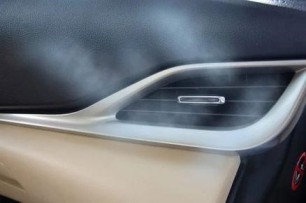
Stinky car interiors? Here's how to get rid of the foul odour
Everyone wants the shiny look of their cars. But what about the smelly interiors? Stinky car interiors can negatively affect your mood and make you feel awful. So, to get rid of foul odours, in this post, we have mentioned some quick tips to help you have a refreshed car and a happy mood while commuting.
1. Vacuum the fabrics:
Most of the time, solid particles tend to get trapped in the car's interior and removing them can be a daunting task. These particles get deep into the fabric. Even after cleaning your car, you still wonder where the smell is coming from.
To get rid of the foul smell, use a vacuum cleaner to clean all the seats and the fabric of your car. This will suck all the gunk and dust particles from your vehicle, leaving your car clean and fresh.
2. Avoid smoking in the car:
If you smoke in your car, you might know how unpleasant the smell is. Smoking leaves behind tar which can stick to the interiors. The smoke can even get in the vent ducts of your air conditioner and become nearly impossible to remove.
To get rid of this, you can wipe off your car with a solution of water and vinegar in a 1:1 ratio with a few drops of liquid detergent added to it. This will remove all of the gunky substance and leave the surface of your car clean. In addition, you can spray some air freshener in the air ducts of your air conditioner to combat the odour.
3. Use baking soda for unpleasant food spills:
Sometimes, you tend to drop something on the carpet or your car's fabric, and the spills being left for a long time start to stink. Even after wiping it, the pungent smell may remain.
To remove the smell of the leftover spill, you should mix a tablespoon of baking soda and three tablespoons of vinegar and use this mixture to rub the mat or car fabric. This mixture will clean your fabric and remove all the unpleasant smells coming from it.
4. Use car deodorants and air cleaners:
This is one of the simplest and quickest ways to keep your car smelling fresh. All you need to do is pick your favourite car perfume and spray it in your vehicle. The air spray molecules will trap the pungent smell and give your car a fresh aroma. There are other similar products that you can explore, like odour patches, air- filters, etc.
5. Get your car a spa:
This will be your last resort if any of the ways mentioned above are not working for you or if the smell is very foul. Next, you should take your vehicle to a professional car cleaning service. The cleaners will clean your car from inside to the outside by washing your seats, mats, air ducts, food trays, etc., making your vehicle look and feel brand new.
We all know how bothersome stinky cars can be. You can follow the tips mentioned above to get rid of the bad odour in your vehicle. But it is not always the dirt that causes the smell. Sometimes these smells can be from leakages. If not addressed correctly, these issues can cause severe damage. So, we would suggest you have car insurance by your side to cover all repairing costs at the garage. Reliable car insurance will keep the stress off your pockets and give your possession the benefits to have a long life.
Click HERE to buy the best car insurance plan.
Disclaimer: The information provided above is for illustrative purposes only. To get more details, please refer to policy wordings and prospectus before purchasing a policy.
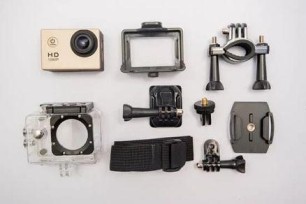
Action camera for your bike travel: Nine tips to film the best videos
Action cameras have become a new trend among bikers. You must have seen the riders with one fastened to their helmets or handlebars. One reason being, India is adapting well to the vlogging, thanks to all the biker communities and influencers. With the evolution of action cameras, millennials are interested in capturing their bike rides and sharing the content on social networking websites.
There are some easy steps for you to produce the best-looking shots from an action camera, regardless of riding ability. Read these nine best tips to film better videos through your action camera.
• Choose a suitable device; you may not require an expensive camera and instead need something easier to transport and manage and friendly with all weather conditions.
• Plan out your videos; consider the video's objective, surroundings, the route you'll take, and how you'll film it. Take into account the lighting, the weather, and even the background music.
• The mainstream camera technology can record at 24 FPS (frames per second) for regular speed and at least 60 FPS for slow motion. However, extra-slow motion does not kick in until at least 120 frames per second, and filming at greater frames per second may lower the resolution.
• Set the white balance to auto, although you may set it to specific numbers corresponding to different lighting circumstances (for example, 5500K = daytime). We find that letting the camera make such adjustments for you is always the best option for shooting true colours on a motorcycle.
• With the voice command feature, you can start recording at any time throughout the ride and stop whenever you choose. Even better, you can snap 'Still Photos' while moving.
• 4K recording requires more memory, drains the battery faster, and can be difficult to edit or playback on a computer.
• An SD card in your action camera is always not sufficient. You should keep at least two or more if you're going on a long journey or simply want to capture more films.
• The typical rule of shutter speed is that it should be twice as fast as the frame rate. A shutter speed of 1/60-1/96, on the other hand, is more helpful because it avoids the sickening amount of 'Motion Blur' that might occur when riding a bike.
• To avoid water drops damaging your footage, use a water-repellent glass treatment spray like Rain-X.
Motorcycling has forever changed as a result of action cams. With the rising trend of sharing content on social media platforms, people use action cameras for incredible filming. However, driving bikes on roads brings the great responsibility of getting the proper protection for you and your bike. You can replace your cameras but not your life, so invest in good 2 wheeler insurance.
These tips for getting better footage are only a starting point; if you have something else that works for you, go for it. Beyond any camera setting, position, or attachment, the most important thing to remember is that the one who presses the record button is the real star.
To get the best 2 wheeler insurance, click HERE.
Disclaimer: The information provided above is for illustrative purposes only. To get more details, please refer to policy wordings and prospectus before purchasing a policy.

The complete guide to start learning carpentry
Often people think they need to invest years in mastering the art of carpentry. However, that's not entirely true. With the right mindset and tips, you will learn carpentry in no time! This specialized craft, believed to be one of the world's oldest professions, is commonly employed even today.
Here we have composed a detailed guide for you that will help you in your lessons while you are learning carpentry.
1. Learn about different types of carpentry:
When it comes to carpentry, the only thing that comes to an individual's mind is furniture. But that's not the real deal. There are different types of carpentry, and you can study each one and then pick the one suited for you.
• Formwork: Formwork in carpentry is designed to construct the structure of the object. It comprises the mould in which the concrete is poured while making stairs, walls, pillars, etc. Formwork, made with wood and steel, can be temporary or permanent.
• Framers: Framers work upon repairing and restructuring wood or wood-derived products. The task that you are to do as a framer is to measure, cut, and assemble the wood for industrial or household purposes.
• Cabinet designers:
This form of carpentry requires proficiency with woods and mastery of tools. The job of a cabinet maker is to build, repair and modify wooden structures and furniture.
• Joiners: Joiners, also popularly known as 'finish carpenters,' are more inclined towards wooden ornaments, fine woodworks, and fitting of doors and windows.
2. Take safety precautions:
While working with tools and woodwork, you must learn safety measures like first aid training and have all the safety accessories like gloves, glasses, helmets etc.
3. Measure like a pro:
Measurement is one of the essential skills you need to learn while practising carpentry. You will be cutting several wooden blocks and pieces most of the time. Therefore, double-check your measurement before doing anything.
4. Learn to use carpentry tools:
Tools make a carpenter's work easier, but only if they know how to use them. Carpenters use various tools like handsaws, chisels, mallets, etc. Therefore, it would be best to learn to use them rightly and understand which woodworking activity necessitates what type of equipment.
5. Get trained:
There are plenty of paths to carpentry, and some of these do not even require any qualifications, only skills.
6. Get working experience:
Working on-site on a live project can be one of the best ways to get into the carpentry industry. You can gain plenty of knowledge and skills while you are at work. Apart from that, you can even get into different roles like general construction operations and work with professional carpenters.
7. Take up courses:
There is an abundance of specialized courses you can sign up for learning carpentry. These courses typically provide you with hands-on and theoretical training to make you a better carpenter.
Carpentry is an excellent skill to learn and practice, and you can excel at it if you choose to continue with passion. Although being a skill, it still poses a threat while working. You may get hurt while using a tool or working with heavy objects. So, it is suggested to have the best personal accident policy in India to safeguard your wellbeing and put less stress on your pockets.
Click HERE to find the best personal accident policy in India.
Disclaimer: The information provided above is for illustrative purposes only. To get more details, please refer to policy wordings and prospectus before purchasing a policy.
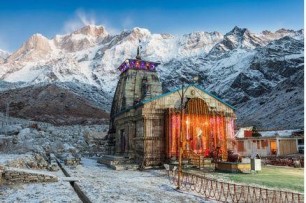
Ten best holy places to visit with your family
Inhabited by some of the most highly religious communities and cultures, India is the world's largest multi-ethnic and religiously diverse republic. The air in the land carries the essence of Dharma and Karma to welcome your spiritually thirsty souls.
Here, we've compiled a list of India's most exquisite holy sites to visit with your family or by yourself to find serenity, knowledge, and peace.
1. Shirdi:
Practitioners of several religions visit the Shirdi Temple in Maharashtra - home of the famous guru Shri Sai Baba. The devotees believe that Sai Baba's 'Dwarkamai' is the place that will solve all their problems.
2. Golden temple:
One of the most significant pilgrimage sites for Sikhs is the Harmandir Sahib Gurudwara in Amritsar. One distinct feature of this Gurudwara is its Langar (meal service), which bagged the honour of being one of the most extensive operating kitchen services. The Langar is open all day for the devotees to enjoy delicious prasad and make their visit more memorable.
3. Kedarnath:
The Hindu temple of Kedarnath in Uttarakhand praises Lord Shiva. It is one of India's Char Dhams. According to the mythology of Skanda Purana, Kedarnath is considered the abode of Lord Shiva.
4. Amarnath:
The sacred Amarnath shrine is located in Jammu & Kashmir. Devotees can only access it after a few days of strenuous hiking. This temple does not contain an idol. Instead, a Shivling forms when water flowing from the cave's top solidifies and rises upwards. This natural phenomenon is the highlight of this holy place. Amarnath is also known as one of the 18 Mahashakti Peethas.
5. Vaishno Devi:
Located in Jammu and Kashmir's Trikuta mountains lies the temple of Vaishno Maa. It is a Shakti Peetha and one of India's most prominent religious sites. Moreover, it is associated with a thrilling story highlighting the victory of good over evil. After visiting the Vaishno Devi, visiting the Bhairavnath temple is a must.
6. Badrinath:
As famous as Kedarnath, Badrinath is one of the Char Dhams for Hindus in the state of Uttarakhand. Lord Vishnu was believed to have come here to meditate and call this location home.
7. Temple of Jagannath:
According to Hinduism, the Jagannath temple in Odisha's Puri is an important pilgrimage site as it conducts the annual Rath Yatra here. Many devotees of Vishnu and Krishna participate in the yatra and celebrate the event like a festival. In addition, this temple is famous worldwide for its architectural magnificence.
8. St. Francis church:
Situated in Goa, it is acknowledged as India's first minor basilica. It houses the bones of St. Francis Xavier in a coffin and is only opened to the public once every ten years. It is also renowned for its gothic architecture.
9. Dargah of Haji Ali:
Dargah of Haji Ali is one of India's most famous Islamic holy sites. Situated in southern Mumbai, it consists of a mosque and Pir Haji Ali Shah Bukhari's grave. The Mughal style architecture influences the dargah, with beautiful white domes and minarets.
10. Bodh Gaya:
Located in Bihar's Gaya district, Bodh Gaya is one of the significant pilgrimage locations for Buddhists. It features three monasteries and several organizations that offer classes on Buddhist philosophy and an 80-foot-tall Buddha statue. It is also home to the Mahabodhi tree, where Gautam Buddha attained enlightenment.
When planning your next vacation, consider a couple of these religious sites in your itinerary. Set off on a spiritual pilgrimage with your family and feel inspired. While you uplift spiritually, it is also vital to ensure your family's safety while travelling. Before making travel plans to these holy places, count on Magma HDI's general insurance policies and have a safety net for you and your loved ones.
Click HERE Browse general insurance policies
Disclaimer: The information provided above is for illustrative purposes only. To get more details, please refer to policy wordings and prospectus before purchasing a policy.

Planning a reunion? Consider these five tourists spots you should go to
It's been a long and challenging time of social isolation, lockdowns, quarantines, and cancelled gatherings. But, finally, the series of missed opportunities have ended as more vaccines reach the arms, and the limitations imposed by the Covid-19 national lockdowns have progressively eased. Now, we have been allowed to socialise with our loved ones in ways we haven't been able to for a long time.
So, what better time to plan a reunion than now? It's time to take your travel bags out of your closet and put an end to these slumber times.
Below, we've talked about five great reunion spots for you and your loved ones to call home for a few days.
1. Goa, where vibes match your energy: If the most desired vacation in India had a name, it would most likely be Goa. Goa is as near a fantasy paradise as you can get and is a perfect blend of modern and traditional culture. You think of clean water beaches, enthralling water-sports activities, and crazy pubs and disco parties whenever you hear about Goa. But, wait, Goa is much more than that. The best Goan seafood, a historical Portuguese colony with a distinct charm and the Goan culture has no parallel. Since the proclamation of a nationwide lockdown in March, Goa has been one of the most eagerly awaited tourist destinations. It's the right time to plan a trip and make a vibe – Goa is ON!
2. Darjeeling, a paradise for tea lovers: Located in the Kanchenjunga range of the mighty Himalayas, Darjeeling is a picturesque hill station in the Northern region of West Bengal, which has earned itself the moniker of 'Queen of Hills.'
Rightly so, Darjeeling works wonders to cater to the magnificent Himalayan scenery, offering a blend of splendid tea plantations on steep mountain slopes, toy train trips through the beautiful city, and exquisite traditional Tibetan food. So if you want to cool off and spend time in the arms of mother nature, Darjeeling is the place to be.
3. Rishikesh, discover adventure with spirituality: Commonly known as the 'Yoga Capital of the World’, Rishikesh is part of India's beautiful state of Uttarakhand. Rishikesh is a place that truly epitomises the word serenity since there are several ghats and ashrams for you to rediscover yourself amid the world's craziness.
Go river rafting in the river Ganga or thrilling treks in the Himalayas; there's something for everyone. Rishikesh is catching the attention of travellers massively after the ease of lockdown restrictions. It will help you wake your spiritual side and enlighten your mood in peaceful surroundings.
4. Coorg, mountains calling: Coorg is part of the scenic state of Karnataka. Located halfway between Mysore and Mangalore, it appears to be a sliver of heaven that has strayed from God's realm. Coorg is a land of rolling hills, evergreen jungles, spices, and coffee farms. Fall in love with soothing sunrises, pristine air and heart-throbbing views of mighty elephants while sipping on a cup of famous Coorg coffee.
5. Munnar, surrender to serenity: Part of God's Own Country, Munnar is one of India's most famous hill stations. It is a destination with an abundance of natural beauty to see, experience, and enjoy. It is a land of virgin woods, beautiful hills, Savannahs, gorgeous valleys, countless streams, magnificent waterfalls, extensive tea plantations, and winding walks that are sufficient to calm your exhausted minds. Reside in the abode of greenery with your loved ones by visiting Munnar.
Have you decided on a destination for your reunions yet? If not, plan it soon, but remember that the pandemic has not ended yet, so you must abide by all Covid protocols. Also, don't skip the most crucial part of your trip: being safe and keeping others around you safe. Have reliable car insurance, and if you have one, check for your car insurance renewal before you pack your bags and set out for an adventure.
Click HERE to know about the best car insurance renewal deals that you can get.
Disclaimer: The information provided above is for illustrative purposes only. To get more details, please refer to policy wordings and prospectus before purchasing a policy.

Eight best tips to be a good pet parent
Having a fluffy and tiny pet with you is similar to raising a small kid. But, as their parents, you also have a responsibility to make sure they do not face any problems. Additionally, having a pet in your home brings a lot of challenges. You have to ensure that you take adequate care of your pet to get them a cosy and safe habitat.
We help you with some tips to become a good pet parent and shower your pet with some extra love and care.
1. Make your pet get a safe environment:
Since your pet will spend most of the time inside the house, ensure that you create a healthy environment. Perform all the primary duties such as ensuring that their water bowl is complete, having food whenever they are hungry, litter box, and bed to snuggle when they want to relax. Keep chemicals out of reach and make sure they are also away from areas that can put them at risk, such as electric wires, electric cords, and strings.
2. Take your pet to the vet regularly:
Like humans, pets also fall sick, and it often goes unrecognized. To ensure your pet is away from sickness, take them to the vet for a regular visit.
3. Keep them active and provide enough socialization:
Similar to how kids need to play outside, pets are equally active and playful. Take your pet to outings, for a walk, run, or take them out for fun activities. You could also take them to pet events where they have plenty of socialization with other pets.
4. Set a daily routine for your pets:
You can create timelines for bathroom breaks, mealtimes, playtime, and outings. This way, your pet sticks to a daily routine, making everything easier.
5. Groom them regularly:
Hygiene is crucial, whether it’s for humans or pets. To avoid infection and diseases, keeping your pets groomed is essential. Regular baths and cleaning will help in keeping them fresh. Additionally, trim their nails so you or other family members do not get injured while playing with them.
6. Invest in training your pet:
Training your pet is an essential aspect of being a good parent. While many pets change and adjust to new behaviours as they grow, training is necessary. You can start by training them from the initial stage, developing them into habits. However, you can also invest in professional pet trainers to save time.
7. Understand that your pet may suffer from separation anxiety:
Like humans, pets such as dogs and cats suffer from separation anxiety. Your pet will become anxious and follow aggressive behaviours as you leave home. An easy way to reduce separation anxiety is by leaving something with your scent on, such as a blanket or sheets, so they feel close to you even if you are not home.
8. Create a playful environment:
Your pets may become bored after a while. Although you cannot ensure that you will entertain them all the time, creating a playful environment by filling their area with toys and other products designed for pets will keep them joyful all the time.
Being a pet parent can be challenging and fun at the same time. Some people feel more connected to their pets than humans, and it’s no harm in that. However, as a pet parent, you must take proper measures to ensure your pet feels loved all the time.
Entrust your bond with your beloved pet with insurance benefits to avoid the worries of injuries and focus just on spending quality time with your animal buddies. Invest in a robust online general insurance plan and get the advantages of its features for your complete family.
Click HERE to know more about online general insurance plans.
Disclaimer: The information provided above is for illustrative purposes only. To get more details, please refer to policy wordings and prospectus before purchasing a policy.

How rock climbing can help you boost your leadership skills?
There was a time when only those with unbelievable daring and high tolerance levels could enjoy rock climbing. But today, time is changing; with modern gears and professional instructors, anyone with passion and some training can exercise the sport of climbing.
Mountain climbing is the sport of climbing rocky surfaces with the aid of ropes and equipment. The goal is to reach an endpoint or a summit of a structure.
It is a physically demanding sport that combines fitness and agility with mental strength. It forces you to push your body's ability further to conquer an ascend or traverse. It may be difficult for some, but that is just another positive aspect of the adventure. The activity gives you a mental and physical boost with an immense sense of accomplishment.
One of the significant benefits is boosting your leadership qualities. As rock climbing is a preferred group activity, it becomes the ultimate classroom with lessons applicable to all aspects of life, including business, management, and leadership.
So, here are some of the important lessons you learn during your way up that eventually make a big difference in your leadership skills.
Trust – important of all! Trust and confidence within the team of climbers is a quintessential skill required during mountain climbing. You may enter situations where your life depends upon your teammate's abilities, and for this, their capability and competence must convince you. Trust cannot be earned or given in a moment. It requires several sub qualities like confidence, proficiency, transparency, and patience. You need to be familiar with each other's strengths and weaknesses and to be confident about relying on someone in the future.
Everyone has their fortes in climbing. For example, some are proficient in rock climbing, whereas others secure the rope while your partner climbs, so we must trust each other to lead when necessary. These are qualities of a good leader that he acts as a team player and not a commander.
Decision making – a remarkable ability! The adventure compels you to make many pivotal and critical decisions during your climb. Your one wrong decision can lead to a consequential mission termination, delay conquering the rock or even a mishap. It requires clarity of mind to work through solving problems. Being able to prioritise and understand the bigger picture is critical to navigating through obstacles.
A great way of decision-making in such environmental conditions is the OODA loop used by the US military. OODA stands for observe, orient, decide and act. OODA is a four-step loop approach that focuses on decision making by filtering available information, putting it in context, and making the most appropriate decision while understanding that alterations should be made (if necessary) when more data is gathered. It is helpful in scenarios where the ability to react to changing circumstances is vital.
Another leadership quality is 'care and concern'. No doubt on the hike, you look out for each other, but that is not enough. Ensure that everyone has a personal accident insurance policy, as it is a necessity that many may overlook.
Is a good leader enough for a successful trek trip? Absolutely not! Every individual requires a skill set for this sport. Skills of navigation, communications, survival, and climbing are all necessary. In addition, rock climbing requires courage and determination. The hard work of ascending is worth the peace at the top.
Click HERE to know more about our personal accident insurance policy.
Disclaimer: The information provided above is for illustrative purposes only. To get more details, please refer to policy wordings and prospectus before purchasing a policy.

Here are the six best ways to combat work fatigue and get back your energy
We have all been in a situation where we've felt completely drained of energy but have no clue what to do to get it back. Work fatigue results in higher unproductivity and even leads to draining mental health. Therefore, to help you combat it, we have compiled a list of the best six ways you can regain your energy.
1. Stay hydrated:
When you don't drink enough water, your heart pumps at a lower rate than usual, resulting in a decrease in the supply of blood and oxygen to the organs. It is recommended to drink at least 3-4 litres of water per day. To get this amount of water, you can keep a bottle of water on your desk while working and take regular sips as you get your job done.
2. Have a clean diet:
It is necessary to ensure that your diet is balanced and contains the appropriate amount of nutrients required by your body. Your meals should include the right portion of protein, fibre, and, most importantly, green leafy vegetables. In addition, you must limit simple carbs and avoid sugar. Overeating can also be one reason why you feel lethargic all the time. Have a balanced diet that covers all your micro and macronutrients.
3. Use Pomodoro Technique:
Studies have proven that the human brain works more efficiently when given rest after any activity. If you work without taking breaks, you will feel low and unproductive. To avoid this, you must try the Pomodoro technique. Using this technique, you break your work into 25-minute chunks and take a 5-minute break every 25 minutes. This will help you manage your time efficiently and help you feel more productive and active.
4. Get yourself moving:
Studies have proven that individuals who work out daily have better cardiovascular activity and a better mood than those who do not. When you are physically active, your body releases endorphins in your bloodstream that give you a feeling of excitement and joy. Exercising for at least 20-25 minutes every day will help you be more active and physically fit.
5. Practice yoga and meditation:
To improve your focus and feel more energetic, you must try yoga and meditation. Many businesses and corporates have adopted meditation as a part of their culture. Practicing yoga and meditation every day may help improve your focus and achieve mental peace that will indirectly help you be more active throughout your day.
6. Consult your doctor:
This is your final resort if you have tried all of the aforementioned tips. There could be other causes why you feel tired and awful all the time. It is recommended to consult your doctor if you continue to feel fatigued even after a considerable amount of time. If you have health insurance, your insurance company can cover your medical expenses. Therefore, you will not have to worry about the cost of medical bills and pressure on your finances.
It can be extremely stressful to be unable to complete a given task even as the clock ticks closer to the deadline, especially when you are struggling with work fatigue. Fortunately, with the help of these tips, you will have a much easier time regaining your energy and feeling more productive!
Click HERE to understand the merits of health insurance.
Disclaimer: The information provided above is for illustrative purposes only. To get more details, please refer to policy wordings and prospectus before purchasing a policy.

How to raise low self-esteem and boost confidence for an improved living
Suffering from low self-esteem is something that most people deal with in silence. Some only have to encounter it for a short time, when they are sad about something or feel a bit low. But, if you continue to dislike yourself, your appearance, or your performance, it can lead to severe mental health issues.
Low self-esteem is often a product of unpleasant life experiences. A psychologist may help you figure out the root cause of your problem. The good news is you can improve your self-esteem at any age by making a few lifestyle changes.
Here we bring some advice for raising self-esteem and boosting confidence for an improved living.
1. Pay attention to your thoughts:
Keep a caution about what you are thinking. For example, avoid thinking negatively, such as if your friends do not hang out with you. Instead, note down the thought and start thinking about positive evidence that contradicts these statements. Finding even one piece of evidence will instantly make you feel better.
2. Identify your triggers:
We all have specific situations that lower our self-esteem. Note down all the things that make you feel insecure. Hanging out with negative people can often bring down your self-confidence because of their behaviour towards you. Avoid the company of such people as they always nudge you in an unpleasant situation.
3. Be kind to yourself:
We often care about what others think of us but rarely consider our thoughts. For example, you have put on an outfit you love, but you have started questioning yourself because someone else has told you that it does not look good on you. Do not do that. The voice in your head saying, “You look good today!” is way more important than other opinions.
4. Build a positive friend circle:
You might find yourself smiling more with specific friends and being a little less self-conscious with them. While not everyone has to make you feel good about yourself all the time, no one should be allowed to make you feel bad either. Enrich your circle of positive friends.
5. Do not fight your thoughts:
Believe it or not, every person in the world thinks that there is someone better than them, even your favourite movie stars, sportsperson, or other celebrities. You cannot control the thoughts that occur naturally to you. Instead of fighting them, allow yourself to feel them and try to lessen their influence on your behaviour and personality.
6. Nobody is perfect:
The ultimate mantra to a good and happy life is remembering that nobody in the world is perfect. Even the people who judge you are self-conscious about themselves, but they try to hide it by reflecting their insecurity on you. Therefore, do not compare yourself to them or pay heed to their opinion. Instead, focus on your goals and aim to be the best version of yourself.
Self-doubting can not only ruin your mental health but also invite unnecessary health problems that can cost you a fortune. These situations will only add to your worries and make you feel emotionally drained out. Hence, doing what makes you genuinely happy is essential for a healthier lifestyle. Having insurance for your aid is also a crucial parameter for improved living. Invest in Magma HDI’s affordable health insurance plans to boost your confidence, add value to your life and make you happy from within.
Click HERE to know more about affordable health insurance plans ideal for all your needs.
Disclaimer: The information provided above is for illustrative purposes only. To get more details, please refer to policy wordings and prospectus before purchasing a policy.

Make your next bike trip more eco-friendly with these travel accessories
After working hard throughout the week and surviving hectic schedules, a break is exactly what you need. A bike trip is the perfect way to unwind from the bustling noises of the city.
Travelling to places with greenery and mountains sounds like a fantastic way to spend your weekend. However, we must keep the beauty of these places alive. You can support the environment and contribute to sustainable travel by including eco-friendly travel products in your journey.
Check out some of these environment-friendly products that are worth the investment.
1. Reusable water bottles:
Single-use plastic bottles are one of the most significant contributors to environmental degradation. Most of these plastics go to the oceans and harms aquatic life. You can reduce plastic consumption by carrying your reusable bottle instead of buying a new one at every stop.
2. Cloth bags:
Plastic has made its way into our daily lives and refuses to exit. From packing to discarding, we use plastic for everything. For an eco-friendly choice, consider canvas or cloth bags. If you wish to shop on the go, you can bring your cotton bag rather than using plastic ones.
3. Biodegradable toothbrushes:
You may think toothbrushes do not need to be made eco-friendly, but the handle and bristles are made of plastic. Nowadays, many brands have started producing toothbrushes made of natural materials.
4. Refillable coffee mug:
If you can carry a travel bottle, why not a mug for your coffee? There are many varieties and designs of reusable coffee mugs available in the market. So instead of buying coffee and leaving a trail of cups behind, you can simply refill your reusable cup.
5. Solar charger:
You may not always find a charging slot when you are on a bike trip. Solar chargers make sure your devices stay charged on the go, not only for collecting as many memories of your trip as possible but also for staying in touch with your family and friends back home. Solar chargers help you stay functional while simultaneously helping the environment.
6. Eco-friendly food containers:
Everybody gets hungry on the road. When packing your food, make sure to avoid plastic or styrofoam containers. It's also advisable to avoid using plastic ziplock bags. Instead, carry eco-friendly containers for your food.
7. Travel towel:
Always carry your own towels when travelling. You can use a microfiber towel that dries fast. This will reduce the need for new towels at hotels, thus reducing laundry and saving water.
Travelling to new places on your bike is a mesmerizing feeling. However, what’s even more amazing is preserving our environment to sustain the beauty of these destinations. By doing this, you'd be playing a crucial role as an environment safety volunteer by promoting a cleaner nature for future generations.
Also, you can only enjoy a trip to the fullest when you know you are protected under the hood of insurance coverage. Therefore, investing in 2 wheeler insurance is also an invaluable practice to follow to eliminate the stress of losing your bike and help you enjoy your trip more.
Browse through the best available 2 wheeler insurance plans for your bike HERE .
Disclaimer: The information provided above is for illustrative purposes only. To get more details, please refer to policy wordings and prospectus before purchasing a policy.

Eight things to know about when travelling with a big group
Visiting new places and destinations is one of the most fulfilling life pleasures you can have. It brings a wave of fresh thoughts and experiences that you’d never receive at home. While some individuals prefer to travel alone, there are several advantages to travelling with companions.
But the downside of a large group journey is that it can often be a trip of regrets if you don't plan it correctly. In this post, we’ve talked about eight great tips for you to follow if you seek an excellent group travel experience.
1. Assign a trip leader:
Having a leader makes so many things so much easier. From planning the itinerary to the hotel bookings, having a single voice for the whole group avoids miscommunications and helps the planning process a lot easier.
2. Distribute the work:
One person can be in charge of logistics, while the other can coordinate for itinerary and other activities among group members. Make the final decision unanimously. This way, everything will be structured, and no one person will bear all the load. After all, it’s a group thing, right!
3. Figure out your finances:
We aren’t talking about tracking expenses; we’ll get to that later. Firstly, figure out the group’s budget for stays, transportation, and meals. By doing this, you can explore many options and packages within your budget.
4. Look for group discounts:
You can unlock a plethora of deals if you're travelling in groups. It’s a winning situation for both the service provider and you. Looking for a stay? Call up the hotel or homestay and ask for group discounts. Booking air tickets? Book for the whole group at once and avail cashback and discounts.
5. Split the expenses the correct way:
The inability to share expenditures can transform an incredible vacation into a tax audit in no time. Nowadays, applications are available on smartphones that allow you to manage the splits and contributions smartly.
6. Schedule some YOU Time:
Remember, you're not obliged to do everything with the group just because you're travelling together. Get out and explore what matters to you the most. Encourage others to practice it as well; it will release you from the tension of being together always and make up for an exciting dinner talk when everyone gets back together.
7. Communicate:
Make sure that everyone in the pact is aware of the entire itinerary. Ascertain that everyone is aware of the stay's location and name. Set up a group text or some other method of assuring that the group can communicate with each other at all times.
8. Not everyone can be happy:
With numerous personalities, there will always be some people who aren't entirely agreeing with others, no matter how hard you try. It’s okay. This is part of group travel and going through it is also an experience of its kind. Find a way to tackle the inconvenience unanimously.
Additional Tips:
• Get in touch with a travel agent to make arrangements easier.
• Try including the people in your group who make life better and not challenging.
• Keep your general insurance plans (travel) updated. Encourage other group members to have a general insurance plan which provides financial protection during the trip.
• Opt-out of the group activities that you don't like.
• It’s a vacation, not a group project. Ease out and relax.
You'll be able to appreciate that quality time together even more now that you know how to arrange a trip for the pact. Those unbroken moments of connection are priceless in today's close yet so far digital environment. Go out and Live!
Know more about the general insurance plans before you plan your next trip. Click HERE .
Disclaimer: The information provided above is for illustrative purposes only. To get more details, please refer to policy wordings and prospectus before purchasing a policy.

Ways to educate your employees about cyber security
The recent surge in cyber-attacks on businesses indicates that no organization is exempted from the online threat. Even the IT industry, which is supposed to help other sectors be safe, is on the radar. No matter how top-notch your company's security software may be. The end-user of it is the employee, and their negligence could jeopardize the entire organization.
Recent studies have proven that more than 80% of cyber-attacks are caused by human errors and not the inefficiency of the security measure. As a result, the significance of cyber security training has grown exponentially. In this space, we will be discussing a few ways to educate your employees to be smart when it comes to online security.
1. Enlighten employees about the impact of cyber exploitation:
When educating employees, explaining the impact of a cyber-attack on the organization is the best move to start with. This includes shedding light on economic damage and loss of trust among consumers. Most workers are unaware of the risks of exposing the company's digital assets while being involved in activities like viewing work-related documents when connected to a public WiFi, discussing the security systems with people not associated with the organization, etc.
2. Make training mandatory for all the new employees:
Ensure that all critical aspects of cyber security are communicated to new employees to prevent potential cyber-attacks. Including data protection and internet usage guidelines in the employee handbook is advisable.
Demonstrating that your company values cybersecurity just as it does job functions and goals will establish a feeling of responsibility in them, and they will be cautious about the cyber threat from the beginning. Educating them over these matters is crucial.
3. Teaching them about password safety:
Passwords are required for accessing devices, authenticating accounts, and using any job software, platform, or tool. Because there is so much to memorize, many employees may choose general passwords that the hackers can readily decipher. Cybersecurity training should educate employees to grasp the significance of passwords. The company must promote encrypted passwords, and employees should be given proper training on the concepts of encryption and decryption.
4. Take advantage of cyber security training courses:
There are a lot of courses available online about cyber security. They take you through all the important Dos and Don'ts while using the internet. Encourage your employees to enrol in such programs and ask them to present the certificate of completion. You may even conduct in-house workshops and seminars regarding the same.
5. Update the training module and repeat the process:
Provide cyber security training regularly. Continuous training will enable you to include regulatory changes and knowledge about the most recent frauds into the training module. Staying up to date can make the difference between keeping your business safe and compromising it to fraudulent attacks.
Additional Tips:
• Organize seminars from cyber security professionals.
• Reward employees for their achievements and wise decisions regarding cyber security.
• Teach ethics to practice while working off-site.
• Teach the employees how to spot online scams.
• Secure your company against cyber-attacks by having public liability insurance as a protective cover for your data and information.
Employees having proper knowledge about cyber safety is a business's first line of defence because, as we said earlier, your company may have the most robust IT solutions. Still, your staff are the ones that operate and maintain those resources. Therefore, educating them with the proper understanding will improve what is frequently seen as the weak point in any security chain: people.
Click HERE to know more about how public liability insurance can protect your organization from cyber threats.
Disclaimer: The information provided above is for illustrative purposes only. To get more details, please refer to policy wordings and prospectus before purchasing a policy.
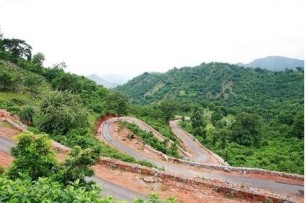
Understand these tips to drive safely in the ghat region
Although you might have overlooked common errors and mistakes while driving on the city roads, you cannot be as careless in the ghat region. You might think it's cool to speed up and make drifts on your car at the bends, but this can be extremely dangerous.
No matter how experienced you are, you have to be extra cautious about driving in the ghat section. The driving conditions in the ghats are challenging due to steep bends and the poor visibility ahead that aggravate the situation differently in different seasons.
Following are some safety tips that might help driving in the ghats feel easier.
1. Don't overtake unnecessarily:
It is typical for an average driver to overtake slow vehicles (especially trucks and buses). However, unlike familiar roads, the front view from a driver's perspective is often restricted in the ghats, and the driver cannot see if there is an available space for them to overtake. Hence, it is suggested to wait till the vehicle in front moves ahead or gives you a signal to overtake it.
2. Stop only at a safe spot:
You might want to click photographs of the pleasant views of the ghats. It is not a good idea to stop on narrow turns and block the way for other vehicles. Hence, if you plan to halt, ensure that you pull over at a safe spot only. Keep your parking lights on when you are stopping. This will alarm the vehicles behind you and reduce the risks of accidents.
3. Use hand brakes if necessary:
Hand brakes are efficient during ghat journeys, where multiple halts may occur due to elevated roads and bends in the way. They are the best support you can get from your vehicle to prevent accidents due to the inefficiency of the standard braking. You will have to set a balanced rhythm between the acceleration and braking of your car.
4. Gear shifting around bends:
It is better to shift down to the second or third gear so that you can take turns at the ghat section with ease. Usually, drivers do not realize that they are in the fourth or fifth gear until they reach the bends, which brings their cars to a jerky halt. Therefore, it is better to change gears and drive slowly in advance so that you do not find a problem in making the turns.
With these tips in hand, you need not worry about driving at the ghat sections now. Although it can be tricky for new drivers, following standard road protocols and safety measures can prevent unfortunate events and heavy losses.
Another important safety tip to follow is getting personal accident insurance for you and your family. Get appropriate personal accident insurance to add an extra layer of protection. Once you follow these tips, you are all set to drive in the hills in peace.
Click HERE to know more about the best deals on personal accident insurance.
Disclaimer: The information provided above is for illustrative purposes only. To get more details, please refer to policy wordings and prospectus before purchasing a policy.

Ten things to take care of before starting with your martial art lessons
We assume that you're about to have your first martial arts lesson soon if you are reading this post. From physical fitness to mental toughness, martial arts require a few prerequisites before you start kicking those sandbags. So, here we have compiled a list of things you must know before your first class.
1. Learn about the various forms of martial arts:
Some of the most common ones are Taijutsu, Kung Fu, Taekwondo, Karate and Brazilian Jutsu. Before starting your martial arts lesson, decide which form you want to learn and train in.
2. Get a standard set by your coach:
Once you decide on your martial arts form, consult your coach, and get a training routine in place. This will help in ensuring consistency and improvement.
3. Get the required equipment:
You need to gear up before beginning your martial arts lessons. Each combat art requires a particular set of equipment necessary to protect you and your opponent throughout.
4. Get your nutrition on point:
Martial art is not an easy sport. It demands a dedicated diet plan and an intense workout regime. While you are training, you will be burning a massive amount of calories. You will also be putting an excessive amount of strain on your muscles, which will result in them getting damaged. So, to repair and strengthen them, it is essential to have a balanced diet with the optimum amount of protein.
5. Understand the art rather than just learning it:
Martial art is not just a form of fighting. It is about understanding your body and its limits. Moreover, it is about achieving inner peace and gaining insight into your true potential.
6. Be ready to bear the blows:
While learning how to defend yourself, you must also be prepared for some blows. There will be instances where you will get bruises, body aches, or even severe injuries. It is recommended to get an individual health insurance plan to safeguard yourself against medical worries.
7. Be there with an open mind:
While learning martial arts, do not compare it to other art forms. Instead, respect each art and understand that each form has its significance.
8. Learn to have self-control:
With learning martial arts, you will learn a great deal about fighting skills, and you will gain a more profound knowledge of the human body. However, you cannot use these powers on an average person. You must be responsible because this can be fatal for the other person.
9. Be a part of the community:
One of the best things you can do is build your connections with the coach and your fellow mates. Your coach and co-trainees will understand you better than anyone else and will support and motivate you throughout your learning journey.
10. Start your martial art class with a NEVER GIVE UP ATTITUDE:
The process can be challenging, but the results will always be worth it. Always keep a high spirit and move ahead to achieve your desired results.
Martial arts is a fantastic sport to play. Not only will it keep you fit, but it will also be a means for your self- defence. Make sure that you are consistent with your training and focus on one particular martial arts form. However, injuries will be a part of the progress. Therefore, we recommend you schedule regular health check-ups and sign-up for individual health insurance plans if you're aiming to excel in fierce sport-like martial arts. And most importantly, remember, the process will always be challenging, but the results will be worth every sweat and tear you wash away!
Get the best deals on health insurance HERE .
Disclaimer: The information provided above is for illustrative purposes only. To get more details, please refer to policy wordings and prospectus before purchasing a policy.
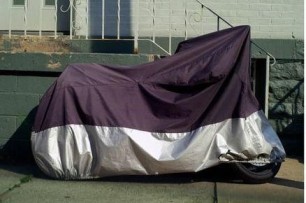
Storing your motorcycle for a short term? Follow these tips to keep it safe
Are you going for a long holiday break? Or the winters are around the corner, and it’s just not your season to ride. Whatever the reason might be, there comes a time in every biker’s life where he has to store his two-wheeler for a while. The duration can be long or short, depending on the reason.
Bike storage might sound like just parking your bike in your garage and putting a cover over it until you use it. You can simply do that, but it can cost you a hefty price if certain factors are not considered. Properly storing your bike is crucial if you’re not operating it for a considerable duration. Here are a few tips that you can imply to keep your two-wheeled companion safe.
1. Give it a good wash:
The dust and dirt sitting on your bike’s body can ruin the metal over time. Make sure you wash it properly using an automobile shampoo and a sponge. After the wash, don't forget to dry it manually as soon as possible. If the water rests on the surface of your bike, that can be a problem too.
2. Lubricate the components:
Because of ever-changing atmospheric conditions, components like chains, cables, springs are susceptible to corrosion, especially when the bike is left motionless for an extended period. You can prevent rusting by lubricating the components with anti-corrosion solutions.
3. Let’s come to the battery:
If you are going to be around, you can start the bike at periodic intervals to retain the charge. If not, then removing the battery is the best option. And if you decide to remove it, keep it in a place where the temperature does not fluctuate.
4. Don't drain the fuel tank:
A full tank is required to keep moisture from accumulating on the tank walls. There are a lot of posts suggesting you need to drain off the tank before storage. But if you drain the tank, you need to layer the tank walls with fogging oil to prevent rust. So it is better to fill the tank up and add a fuel stabilizer to it.
5. Change the oil and replace the filter:
Old oil sitting in storage can damage engine components, making it unsuitable for vehicles that will be stored for more than a month. Change the oil and replace the filter after you've given the bike one last ride and filled up the petrol.
6. Check on your insurance:
Apart from physical preparation, it would be best to double-check your bike insurance. Check the expiration details and ensure it doesn't expire while in storage. Because you still want to be insured in case of theft or fire, it's not a good idea to cancel or let your motorbike insurance expire while it's not in use. Renew your bike insurance online even when you are away with just a few clicks. It’s quicker than topping up your fuel tank.
Additional Tips:
• Park the bike on the center stand.
• Use a good quality cover.
• Empty all the storage compartments.
• Choose a well-ventilated storage place.
• Ensure pest control of the parking area.
• Keep the tyre pressure in check. Ideally, fill the tyres up to 80%.
Whatever your motivation for storing your motorbike might be, how you prepare it for storage will significantly influence its performance in the future. If you're unsure of the duration of storing, it is preferable to over-prepare for storage. Also, consult with your mechanic to guide you in the right direction with more handy tips.
Click HERE to get the latest updates about the deals on bike insurance online.
Disclaimer: The information provided above is for illustrative purposes only. To get more details, please refer to policy wordings and prospectus before purchasing a policy.

Five safety tips every female driver should know
Women taking over the world has defeated the dependency on others to get things done. Female drivers are just another example of this scenario as they are considered safer drivers than males.
However, the risks for women on the road are twice as compared; especially if you are a lady driving alone as you are exposed to many dangers. A female driver needs to be extra cautious to avoid undesirable events such as falling victim to hijacking, stalking, assault, or worse, murders. Here are a few tips to prevent from these situations happening and keep you driving safe.
1. Maintain your vehicle:
• Maintenance will assure you fewer chances of the vehicle breaking down midway through your journey.
• Get the car thoroughly checked before every long trip and in regular intervals for daily commute.
• Do not forget to keep an eye on the fuel indicator.
• Look out for unfamiliar noises of the car and get it checked from a reputed garage immediately.
2. Learn the basics:
• Acquire complete knowledge of the car, including its engine capacity, tyres, oil, and fuel capacity.
• Every female driver should know how to change a flat tyre, jumpstart the battery, clean up the carburettor, etc.
• Top up your oil, antifreeze whenever needed.
3. On-road safety:
• Lock the car doors first as soon as you enter.
• Park the car in a settled area and check your backseat when you get in the vehicle.
• Do not interact with anyone on the road.
• Never offer a ride to strangers, especially when alone.
• Always inform at least one person from your circle about your trip details and plans.
• Avoid pulling over at dark and isolated places.
• Install a certified GPS device in the car and give access to your close people
4. Driving suggestions:
• Beware of easy distractions such as using your phone, loud music, zoning out, eating or drinking. You need to keep your eyes on the road and stay alert while driving.
• When required to stop, make sure to turn on the flashers and then pull over slowly.
• Flashers should be on in case of breakdowns, illegal parking, tyre change, lousy weather or slowing down to exit.
• If you notice someone following your car, drive to the closest police station to get help.
• Honk your horn only in critical situations like blind turns, warning someone, to avoid collisions or possibly dangerous circumstances.
• Maintain a distance of at least 8-10 feet from every vehicle ahead of you.
5. Insure your vehicle:
• Refrain from driving without car insurance.
• Insurance can serve as a support aid when caught in unfortunate situations such as road accidents, breakage, etc.
• The insurance company will also track down your location and reach there in emergencies.
• Keep your car insurance up to date. Car insurance renewal is requisite when it is about to expire or expired.
Driving alone is not always scary and of insecurity. Yet, women have to take precautions to ignore indulging in misfortunate events and be their own protector. Increase your safety while driving by being alert, paying attention to your surroundings, keeping your car maintained, car insurance renewal before expiry, follow driving instructions and so on. We hope that these tips will add to your security and keep you guarded when driving around alone.
Click HERE to know more about car insurance assistance.
Disclaimer: The information provided above is for illustrative purposes only. To get more details, please refer to policy wordings and prospectus before purchasing a policy.

How innovation in e-scooters is making the headlines in India
Today, climate change is a severe concern. According to a survey published by IQAir, India now has 22 of the 30 most polluted cities globally, which is alarming! Nations around the globe are researching to find environmentally friendly alternatives for everything that feed on fossil fuels. India, too, has set a goal of reaching zero greenhouse emissions by the year 2050. For that, the country is exploring electric mobility solutions that will cut down severely on greenhouse emissions.
When we talk about the electric mobility of the country, its primary segment is the electric scooters. According to nationwide surveys, the market of e-scooters in India will grow by 25-30% by the year 2030. Reasons for these impressive figures are the constant hikes in fuel prices and also the rising pollution levels. Thus, E-scooters are the next big thing in India, making them flash in the headlines in India.
We've seen plenty of new businesses competing for professional status in the electric scooter sector in the recent past. Their advantages reflect their focus on newer technologies, cutting-edge designs, accessibility, and practicality. However, more encouraging is the arrival of international electric two-wheeler powerhouses in the Indian market.
The Indian government recognises the importance of environmental sustainability and renewable energy. It has launched programmes such as 'Switch Delhi' and 'Go electric' to encourage citizens to use electric vehicles. Below, in brief, we've discussed the pros of e-scooters and why you should think of getting one in future.
Environmentally friendly: Electric scooters are ecologically friendly since they reduce the emission of harmful greenhouse gases such as CO2. Every time you ride an electric bike, you're contributing towards a cleaner environment.
Pocket friendly: If you use an e-bike instead of a traditional motorbike, you will save huge money in the long term. Petrol and gasoline are expensive in most nations, and price increases can significantly affect your budget. With e-bikes, you can purchase low-cost batteries that can go 18-50 miles on a single charge.
*Quick math – an e-scooter consumes around 250 watts of power for 20 minutes of driving. Because the cost of electric power per unit (1000 watts running continuously for an hour) is Rs 5, it is evident that electric scooters are reasonably affordable.
Low maintenance cost: You no longer have to be concerned about the upkeep of your scooter. Because of the electric engine, you don't have to spend extra money on time-consuming activities like oil changes, filter cleaning, and gasoline, typically with standard two-wheelers.
Financial incentives: Indian Government provides tax benefits to owners of electric vehicles. Loans are also made accessible at cheaper interest rates, encouraging more people to buy e-scooter. In addition, the Department of Heavy Industries recently revised the 2019 Faster Adoption and Manufacturing of Hybrid and Electric Vehicles (FAME-II) initiative to provide 50% more incentives for the electric scooters sector.
Easy to the Ears: In India, noise pollution has long exceeded permitted limits and has become a severe problem, particularly in metropolitan areas. Switching to an e-scooter can help with health issues, including anxiety, tension, and headaches, as they are almost silent due to the absence of disturbing noises of combustion engines.
Pat yourself on the back if you're planning to go for an electric vehicle or use one already. The future is certainly electric, and not only you're part of it, but you're also helping this world become greener. While you contribute to our mother earth's safety, protect your e-scooter by getting 2 wheeler insurance online for it. If you're planning to buy a scooter, then GO GREEN...GO ELECTRIC!
Click HERE to get the best 2 wheeler insurance online.
Disclaimer: The information provided above is for illustrative purposes only. To get more details, please refer to policy wordings and prospectus before purchasing a policy.

Wondering how to keep your car shining post-monsoon?
We love the monsoon for bringing down the temperatures and making us fall in love with books, coffee, and comforters. However, with the pleasant rain comes floods, water-logging, and much more. And all over again, the monsoon season never fails to surprise us with the amount of damage it does to our vehicles.
The lengthy bills from your car service centre for rusting, complete breakdown, and other damage to your vehicle remind you of your car insurance renewal.
Please remember your car needs some special attention post monsoon time. So here we bring some valuable tips to keep your vehicles safe and minimize the damage to your car.
1. Car Wash – a thorough cleaning: ‘Keep it clean!’ is probably the most ordinary and mundane advice anyone can give you for anything. But here, it is also the most effective. Nothing is better than a good clean-up of your car once the monsoon is over. Be sure to get rid of the leaves, mud, twigs, dirt, and other contaminants that could damage your vehicle. For example, if you have parked your car out in the open during the monsoon, you should get a proper car wash at a service centre to prevent the build-up of leaves and twigs that could potentially damage the paint on your vehicle.
2. Protect the Paint – keep it shining: The best way to keep your paint new as day one, even after these heavy downpours, is to use a protective paint layer, which separates the moisture and rain from the original colour on the surface of your car. For this, you can select from a wide range of quality protective products or opt for less expensive ceramic paint protective layer options. You can also go for a protective paint job at the workshop.
3. Electrical hazards – don’t get SHOCKED: Water and electricity can be dangerous together. So it is advisable to check all the wiring and electrical components of your car to avoid any short circuits. Get your car thoroughly checked for the wirings and any loose or open ends. Use electrical tape to fix them or call a mechanic.
4. Drive Slow – stay safe: Though this one is for all seasons, you need to be extra careful on the road after monsoons. There are potholes everywhere, and the quality of the road is even more aggravated. Drive cautiously, don’t attempt to be reckless as it may cost you badly.
5. Car insurance – safeguard your finances: Relying on your car insurance will help you recover and repair the significant damages to your car if it requires a visit to a workshop for the post-monsoon repair service. Car insurances are financial saviours, and it is your responsibility to avoid delays in your car insurance renewal.
Now you know these must-dos to keep your car clean and in good shape after the monsoon departs. It is always a good practice to get a post-monsoon servicing done to ensure that all the parts of your car are correctly functioning.
To know more about the car insurance add-ons that will be beneficial this monsoon, click HERE...

Say goodbye to indigestion with these seven effective home remedies
Some foods might delight your taste buds but can cause discomfort in your stomach. Overeating or eating something that does not agree with your stomach can cause indigestion.
Indigestion is a common health problem. Most people take medications because they do not believe in home remedies. While medications can provide quick relief, home remedies are suitable for your overall health in the long run.
Here we have a list of easy home remedies to calm your upset stomach with zero side effects and the best relief.
1. Peppermint tea:
Peppermint is not just a refreshing flavour for candies, chewing gum and mouth fresheners. It has antispasmodic qualities, making it an excellent ingredient for relieving stomach problems like nausea and indigestion. You could easily add peppermint to your diet by drinking peppermint tea after meals and sucking on peppermint candies when you experience symptoms.
2. Water:
Of course, you already drink water throughout the day. However, sometimes people can forget to drink the adequate amount required by the body. Water is essential for the digestion process and absorption of the nutrients in the food and beverages you consume. Being dehydrated can reduce the effects of digestion by facilitating the incomplete breakdown of complex food particles.
3. Baking soda:
Indigestion occurs when the acid level in your stomach increases. Baking soda has neutralizing properties, which relieve the effects of acid instantly. Baking soda is cheap and can be consumed by mixing with water or honey and lemon.
4. Chamomile tea:
A cup of chamomile tea can fix gut discomfort and indigestion by reducing the number of acids in the gastrointestinal tract. The herb also has anti-inflammatory properties that help ease the pain. Chamomile tea is also a popular choice for calming anxiety.
5. Avoid lying down:
Parents often tell us not to lie down immediately after eating, and now we understand why. Lying down after eating allows the food to travel back upwards, which causes heartburn. Avoid lying down for at least an hour after eating. If you must lie down, elevate your head, neck, and chest with pillows at a 30-degree angle.
6. Apple cider vinegar:
There are uncountable benefits of apple cider vinegar, ranging from skincare to weight loss and relieving indigestion is one of them. Insufficient amounts of acid can also trigger indigestion. The acidic properties of the ingredient increase your body's production of acids. Raw, organic, and unfiltered apple cider vinegar works best for indigestion.
7. Ginger:
Ginger has long been famous for its curative properties. It contains properties that can relieve the contractions in your stomach during indigestion by moving the responsible foods from the stomach much quicker. Ginger can be added to various savoury items as a spice and be used in desserts. For a quick ginger remedy, you could make ginger tea whenever you feel the symptoms.
By following the above remedies, you can manage your indigestion at home without heavy doses of medicines. These home remedies are scientifically proven to improve your condition. However, besides these, you may even count on insurance coverage to secure your health against other diseases. Choosing a good health insurance policy for family will act as a safety net for everyone at home. Purchase one today to enjoy the seamless benefits of the coverage.
Click HERE to know more about the health insurance policy for family that can be your financial saver.
Disclaimer: The information provided above is for illustrative purposes only. To get more details, please refer to policy wordings and prospectus before purchasing a policy.

Why do most millennials buy health insurance online in India
India is a global capital for housing millennials, as almost 34% of its population is GenY. Powered by advanced technology, data, to be more precise, millennials consume a large amount of data each day. No wonder they are recognised as the most data-driven generation.
Because they grew up online, the idea of getting things done from smartphones appeal to millennials' tech-savvy attitude. Rightly so, as it involves a lot less effort. The fact that millennials (and the great majority of customers) are accustomed to doing nearly all of their daily transactions online makes sense to purchase online health insurance.
In this space, we will talk about why this data-hungry generation prefers to go for online health insurance purchases and why you should too.
1. Lower cost: Millennials are identified as frugal shoppers as they believe in cost-effective purchases. They typically choose to follow their instincts and value the price over recommendations. Buying insurance offline involves a cost consisting of the paperwork, the commission of intermediaries, and the transportation cost to make the sale. These variables being absent for online health insurance reduce the premium cost immediately. There is even a chance of getting a lower premium that adds to the savings in some circumstances. And all this attracts millennials; after all, they love smart investments.
2. Ease in comparison: While purchasing health insurance online, you can compare several insurance plans from different company side by side, either by yourself or using dedicated comparison tools. It can help you look at the pros and cons of an insurance company and select the best for you. This ease in comparison is almost impossible while making an offline purchase. This speeds up the overall buying experience and matches this generation's demand for online convenience.
3. Customer reviews and testimonials: On purchasing online health insurance, users have an option to leave feedback on their experiences. These reviews are available on the insurance company's website, their social media pages and other third-party review websites. These reviews help to ascertain your decision for the best insurance plan for you. Millennials never overlook the reviews section; sometimes, that's the turning point in finalising or rejecting a purchase for them.
4. Time saving and DIY: Time is money, and millennials have a reputation for spending an average of two minutes looking for product information and making decisions. Moreover, they want to control their decision and follow their D.I.Y. style. Once convinced, they prefer to finish the entire procedure in a few minutes and get an instant digital copy of the insurance papers. They are more comfortable with online health insurance where neither the insurance company nor the intermediary agent is visited.
5. Online insurance calculators: Online premium calculators are available on the websites of majority of health insurance providers. It makes it simple for clients to assess a plan's premium based on their specific needs before purchasing. In addition, these calculators offer highly accurate estimates. Millennials believe in cost-saving even as much as they look for other features from their policy like add-ons and NCB (No Claim Bonus). Nothing beats a good policy with all the features and a low premium. These online calculators justify the needs of millennials to a great extent.
What does all this tell us about millennials' inclination towards online health insurance? As you can see, this generation is more likely to use the internet for their insurance-related purchases than average consumers. So whether you're a millennial, Gen Z, or a baby boomer, online health insurance is here to evolve and to provide convenient and attractive policy advantages. It's time for others to start exploring online health insurance options too.
Click HERE to buy the best online health insurance for you and your loved ones…

Two-wheeler insurance hidden costs you should know about
Buying a two-wheeler insurance requires investment of time as the long and complex policy document in small font might look tiresome and time-consuming to read. Most people overlook those crucial details and rely on their life insurance agent while purchasing a policy. You need to be aware of the hidden charges that ridiculously drive up your insurance bill, as your agent might not explain everything you should be knowing.
A few adjustments here and there in your two-wheeler insurance policy might not seem like a big deal to you, but trust us, those will help you save a considerable sum that stays with you over time.
So, here are a few two-wheeler insurances hidden costs you should always pay attention to.
1. Paperwork fees:If you are not opting for 2 wheeler insurance online and instead buying your insurance physically through cheque, you are certainly paying a higher premium. Your insurance company charges you a couple of hundred rupees for the paperwork. Also, the company will not bear the postage cost and handling of all that paperwork; they will undoubtedly pass those expenses on to you. In an online policy, your insurance providers will reward you by waving off extra charges for choosing to go paperless, setting up automatic payments, and paying your premiums online.
2. Avoid monthly payment: When it comes to your 2 wheeler insurance, the payment interval is equally important as the mode of payment. If you pay a monthly insurance premium, the company charges you for specific "processing fees" and "administrative costs" each time you pay. The "instalment fees" will cover all these expenses. Like most businesses, insurance companies also would like to collect their money first. So they encourage you to consider paying upfront, and for that, they offer you some rewards. Therefore, if you decide to pay quarterly (four times each year) or semi-annually (two times a year), you will notice that you have saved considerably on your premium. Of course, if you pay annually or pay-in-full, the offers are even better.
3. Cancellation fees: If you decide to withdraw your policy within 14 days of the cooling-off period, you will have to pay a small fee to the insurance company for the paperwork. What if you cancel your policy post completion of 14 days? Unfortunately, it'll cost you an even bigger fee for the days your insurance company has insured your 2 wheeler. These fees range from zero to thousands of rupees or even more. It takes administrative efforts to cancel your policy, so these efforts justify the cancellation fee.
Other fees include replacing paper documents or fines for providing inaccurate information to insurance companies when getting a quote. Yes, that's the fact that most of us are not aware of. Therefore, make sure that you provide the correct information while applying for a policy.
Did you also get promotional emails and phone calls for the cheapest 2 wheeler insurance online? Don't get fooled by these fabricated illusions of these promotional offers; instead, be a smart buyer to make intelligent purchases. You can often save a significant amount by moving online and paying annually.
Click HERE to get a quote for your 2 wheeler insurance now…

Two-wheeler insurance policy. Popular facts and myths
Have you got stuck in heavy traffic again? Guess who'll make the riding experience smooth and convenient by sliding through traffic? Your two-wheeler, of course!
For all the experiences you plan to rejoice in with your two-wheeler, there is a bit of practical advice – as a responsible owner, you should carry a valid insurance policy. But many people doubt that choosing an insurance policy is a daunting task and is expensive. So in this article, we'll tell you more about the myths and facts you should know about your 2 wheeler insurance policy.
Myths get a huge living space in India as false information and rumours always travel faster than light. So let's first have a look at some common myths about 2 wheeler insurance.
1. Choosing an insurance policy is a difficult task: Choosing an appropriate policy is confusing, full of hassles and a tedious task.
2. Insurance is expensive: Insurance is only going to cost money and would not be worth it. This is instead a very common thought every customer has when buying Insurance.
3. Third-party cover is sufficient for two-wheelers: Third-party cover will provide complete coverage for bikes. In case your bike is old, it does not need an insurance policy.
4. Insurance premium depends merely on credit score: The credit score of the owner is the only factor that determines the premium for your chosen policy.
5. An insurance policy covers all damages caused: The insurance policy is enough to cover all costs of damages despite the cause behind it. Your policy will pay you regardless of any terms and conditions.
Usually, facts get lost somewhere in the chaos of myths, but no worries, we'll present them before you.
1. Selecting an insurance policy is no fuss at all: With the assistance of professional insurance companies and their customer services, choosing and buying the right insurance is as easy as buying anything else. You can purchase the insurance right from your couch without even visiting the company.
2. Insurance is not expensive if chosen correctly: Nowadays, customers can choose from many options and plans offered by various insurance companies and even compare them to select the right one. Not only that, you are free to go through every little detail of the policy to avoid unnecessary charges.
3. A proper two-wheeler insurance policy is necessary for your bike: Just having a third-party cover is not enough to secure your bike. It will only provide cover for the losses against third-party and never for your bike. Hence, going for a comprehensive cover is a wise choice.
4. Online is safe: There is absolutely nothing to fear when opting for 2 wheeler insurance online. You can find the most attractive deals and discounts online and even compare policies with smart comparison tools. Moreover, sharing your personal information such as your name, age, address with reputed insurance firms is safe and trustworthy.
5. Every policy has specific terms and conditions: For all the insurance policies, there are limitations on claiming coverage. For example, the insurer will not cover any cost if the mishap includes the drink and drive case.
Having good information about both myths and facts should help you get a clearer idea about a two-wheeler insurance policy. So be a responsible citizen, don't fall prey to any myths and choose a policy for your two-wheeler now by clicking HERE.

Advantages of buying health insurance at an early age
There is a myth that young and healthy people do not need health insurance. An unhealthy lifestyle, irregular eating habits, and no time for exercising are the main reasons for premature illnesses even at a very young age. So, it has become necessary for everyone to have health insurance irrespective of age or income to cover themselves against lifestyle-related diseases. Getting health insurance at an early age brings many benefits and features. We explain a few of them here.
Low premiums:
The main benefit of getting health insurance at an early age is low premium costs since premiums are calculated based on risks. When a person is young, the risks involved regarding their health are lower; therefore, the premium will be low. It is advised to get health insurance as soon as a person turns 18. A child below the age of 18 can get coverage in the parent’s insurance policy.
Wide range of medical coverage options:
Another advantage of availing of health insurance at an early age is the comprehensive coverage options for diseases. Fortunately, treatments and medications are available for all diseases. Some of these diseases can cost a fortune if the expenses are not covered by health insurance. Health insurance policies provide a lot of financial support in case of any emergency. Also, there are lifetime renewal options if the policy is purchased in an early stage.
No-claim bonuses:
Every year, if a no-claim is made for the health insurance policy, the policyholder is rewarded with a bonus. Thus, for a policy purchased at a young age, it is very likely that you make no claim during the policy tenure and can get benefits of cumulative bonuses.
Income Tax advance:
Purchasing health insurance brings income tax benefits to you. Under 80D of the Income Tax Act, 1961, you can get a tax refund on the yearly premiums you pay for the insurance. It helps you in your financial planning from a very early age of earnings.
Low rejection rate:
Getting a health policy, adding the top-ups and other features is much easier for the young people than the elders. As mentioned earlier, getting the higher coverage or additional feature will cost you relatively less with a low rejection rate. You can enjoy more benefits of comprehensive and holistic coverage than the policies and coverage applied at a later age.
Avail more discount for online health insurance:
During pandemic times, visiting an insurance company and purchasing health insurance is not feasible. Most of the companies now offer discounts and other advantages if applying online. Online health insurance saves you money by recommending the best deals and well-suited policies depending on your requirements. Some websites even have the expertise to suggest plans that match your exact needs.
Like the other mandatory official documents such as driving license and PAN card, it should be your responsibility to purchase health insurance once you turn 18. Negligence in the matter of health is the worst mistake to make. Wisely choose the plan that can cover all your medical expenses for the long term.
TURNED 18 AND WANT TO BUY HEALTH INSURANCE THAT SUITS YOU BEST? CLICK HERE…

Top six camping destinations around Mumbai to spend a happening weekend
Surviving the heat of the hectic work schedules throughout the week and managing the balance between work and personal life is challenging. Mumbai’s fast-paced lifestyle can turn overwhelming as the weekend arrives. But there is a cure for this; Planning a weekend getaway to someplace away from the city chaos. This time think something different for the weekend besides the long drive trips to Lonavala and Mahabaleshwar or jetty rides to Alibaugh. We suggest a full-fledged camping experience to surrender in the arms of nature.
Don't miss out on the escape to the perfect experience of reviving your connection with nature. This article presents a cumulated list of camping sites in a radius of about 200 km from Mumbai.
1. Bhandardara, Ahmednagar:
Known for its patent Fireflies festival, Bhandardara is one of the top places for camping, especially for Mumbaikars. Located 165 kilometres from Mumbai, the destination allows you to have a comfortable long drive on NH3. This camping site also offers you amazing activities such as stargazing, constellation watching, and boating in the lake. Spend some peaceful time in serenity and flush out all the stress of the week during your stay at this beautiful campsite.
2. Malshej Ghat, Kalyan–Ahmednagar Road:
Tucked in the Western Ghats and home to a diverse range of biota is another lush spot for night camping named Malshej ghat. This could be your go-to place if you’re seeking a camping experience all by yourself. The mild air can soothe even the most restless hearts, and the mist and rain create the perfect environment for solitude.
3. Karnala, Mumbai-Goa highway:
Mumbaikars are no strangers to the name Karnala. The fort and sanctuary located here are famous all around the Raigad district. What makes it one of the most extraordinary monsoon retreats is its blanketed hillocks with verdant forests, grass, and foliage throughout the season.
4. Uttan, Mumbai:
Despite being located in Mumbai, this place is cuddled in a beautiful natural setting, far from the usual concrete jungle that we see. Situated at the city’s northern fringes, this is a laid-back fishers town. Visit it to live underneath the stars, eat fresh and delicious seafood, watch live music, and participate in thrilling adventure sports. What makes it even more exciting is that you don’t have to travel more than 50 km to reach the destination.
5. Kolad, Roha:
Residing on the banks of the river Kundalika, Kolad is one of the most serene camping spots around Mumbai. It is also known for being the favourite river rafting destination for Mumbaikars. It is left untouched by wannabe tourists, and hence the only thing that breaks the peaceful stillness is the chirps of birds and babbles of the river.
6. Pawna Lake, Pune:
This lake is an ideal weekend getaway for people who want to absorb the wonderful natural environs. As it rests in the woods, it provides the campers with a great deal of peace and contentment. This site has views that satisfy your exact image of lakeside camping.
Having tons to offer in connection with adventure, nature, relaxation, and breathtaking vistas, these camping sites will undoubtedly provide you with lifelong memories. However, the true essence of any trip can be experienced when it is crafted with security assured at all stages. You won’t like to carry the stress of the safety of your belongings and valuables when you’re out to enjoy your holidays. So, protect your travel with Magma HDI’s online general insurance plan that will ensure your assets’ security throughout your trip.
To look for online general insurance, click HERE .
Disclaimer: The information provided above is for illustrative purposes only. To get more details, please refer to policy wordings and prospectus before purchasing a policy.
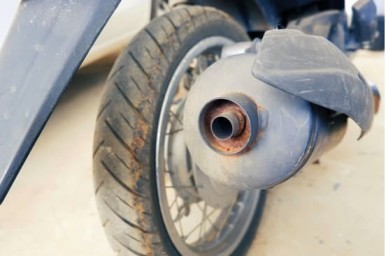
These useful hacks can help you remove rust from your two-wheeler
There is no question that motorcyclists are crazy about their bikes and want to keep them glowing all the time. Most of the time, even seasonal changes won’t derail their desire to have a shining bike. Seasonal changes like wet and humid weather harm the two-wheelers most, mainly the rusting. Rust is an awful deal to handle when the bike has seen mud, water, ice, and road salt.
But there are DIY hacks that help you combat rust and preserve the life of your two-wheeled companion. In today’s article, we’ll discuss some clever, useful hacks that will help you handle rust efficiently.
1. Lemon Juice to remove rust:
The acidic nature of lemon helps eliminate rust in its early stages before it affects the inside metal. Here’s how to use it:
• Collect ample lemon juice in a cup.
• Apply the juice thoroughly onto a ball of steel wool with the help of a spoon, or simply dip the steel wool in the cup.
• Rub the rusted areas gently with steel wool.
• Wipe away the extra lemon juice and rust particles using tissue paper, done!
*keep the juice away from your eyes and any open wounds as it may cause burns due to its acidic nature. Wear gloves and glasses for precaution.
2. Get rid of rust using potatoes and salt:
When it comes to organic cleaning, this small technique is fantastic to have on hand. Here’s how you can use this duo to get rid of that adamant rust;
• Cut a potato in half.
• Rub the sliced portion of the potato on salt, thoroughly coating it.
• Rub the salted potato over the rusted parts vigorously. Slice the salted end of the potato off and dip it in extra salt as needed.
• Thoroughly rinse afterwards.
The oxalic acid present in potatoes naturally helps dissolve rust, while the salt works as an abrasive.
3. Sandpaper to scrape off the rust:
Use sandpaper to get rid of rust from parts such as engine and transmission, as these parts require precise attention. A slight deviation can throw everything off if not done correctly.
4. Baking soda to remove rust:
Make a thick mixture of water and baking soda and rub it all over the rusted surface. Let the paste settle on the bike's surface for about an hour. Rub the surface with steel wool. Rinse thoroughly with water & dry it using a paper towel.
5. Scrubbing – the good old way:
Simply scrubbing using a wire brush is also effective in getting rid of rust from larger bike parts. This technique, however, is not suggested for chrome parts of your bike since you may wind up scratching them.
Although these organic rust removing techniques are excellent, most of them are acid-based, and they have the potential to damage your bike, particularly in areas with mixed materials such as steel + rubber or steel + plastic.
It's best to hand over your motorcycle to experts for rust removals if it is heavily covered in rust. They make sure you get the best results while assuring the perseverance of your bike. A good 2 wheeler insurance provides the security covers with these aspects as well, including rust remover. So if you have 2 wheeler insurance, you can claim the rust repairs under it. Be a responsible owner and make investments that can yield you considerable profits. After all, your two-wheeler is a prized possession, and maintaining it in good shape should be your priority.
Click HERE to know more about 2 wheeler insurance.to know more about 2 wheeler insurance.
Disclaimer: The information provided above is for illustrative purposes only. To get more details, please refer to policy wordings and prospectus before purchasing a policy.

Follow these simple steps to renew your expired driver's licence
Whether you are driving a motorbike or car, having a valid licence is mandatory. Most driving licences are issued for approximately 20 years or until the driver turns 50 years (whichever is earlier). Therefore, you need to renew your licence once it expires. Note that your driving experience and capabilities during your previous licence will not be considered for the renewal of it. Additionally, if you do not renew your licence until a year after the licence’s expiration, you will have to go through the entire process of getting a licence again.
Moreover, your driving licence is valid up to 30 days from expiration. Gone are the days when you had to stand in a long queue at the RTO’s office for the renewal of your licence. Due to covid’s second wave, the government issued a hassle-free way to apply for the renewal online in just a few simple steps.
No matter which state you reside in, you can easily apply for renewal from the comfort of your home. Continue reading the blog to discover all the vital steps you can take to get your licence renewed.
Steps to renew your driving licence online:
Step 1: Visit the official website of Parivahan Sewa Portal of MoRTH (Ministry of Road Transport and Highways) by clicking HERE
or head to HTTPS://SARATHI.PARIVAHAN.GOV.IN/.
Step 2: Next, enter your state’s name on your screen.
Step 3: You will now be redirected to the page with various options. Select “apply for DL renewal.”
Step 4: Now, a page with instructions will appear. Carefully read each instruction to avoid committing any mistake.
Step 5: Click on “continue” at the bottom of page and proceed further to the application form.
Step 6: Now, fill your application. Enter your previous driving licence’s number and date of birth and click on “continue.” Fill all the details and provide information as asked on your screen.
Step 7: Depending on your state, you may also require to upload your signature and photo.
Note: If you need to make changes to your medical certificates, you may have to book a time slot to undergo the RTO test.
Step 8: Now, the site will take you to the acknowledgement page, where you can see your application ID. Additionally, all the application details will be sent to you through SMS on your registered mobile number. Make sure you print out the acknowledgement for future reference.
Step 9: The final step is to make the payment and verify your payment status. You can pay through a debit or credit card. Usually, the fees may vary from one state to another.
Simply follow the above steps to renew your existing licence in a fast, convenient, and hassle-free way. Never drive a vehicle without a proper licence. If you are caught driving without a licence and valid insurance papers, you will be fined with penalties. Be a responsible driver; keep all your essential documents ready with you at all times, including your car’s insurance papers. If the insurance is due, make an online motor insurance renewal to ensure the benefits of your policy and protect you against any mishaps.
Click HERE to get the best quotes for online motor insurance renewal.
Disclaimer: The information provided above is for illustrative purposes only. To get more details, please refer to policy wordings and prospectus before purchasing a policy.

Is it possible to install CNG kits in two-wheelers?
Following year-long debate and discussions, the Indian government finally allowed CNG kits for two-wheelers as well. Interestingly, CNG kits can efficiently be installed even in mopeds with about 81.75 cc to 136.25 cc capacity. However, there are some restrictions on the installation of CNG kits in two-wheelers. ICAT and Automotive Research Association of India (ARAI) respectively approve only Euro-III-type automobiles to install these CNG kits.
CNG costs much cheaper than petrol or diesel and gives clean fuel to two-wheelers. This suggests that converting your two-wheeler into CNG will prove to be economically practical.
Advantages of installing CNG conversion kits:
• Natural gas is a cheaper alternative to petroleum as it costs almost one-third of petrol in some states of India. Natural gas is as cheap as 49.40 rupees per Gasoline Gallon Equivalent (GGE).
• CNG is less harmful to the environment than petrol. Compared to petrol and diesel, natural gas emits much less hazardous pollutants and hydrocarbons, thereby reducing the adverse effects of harmful emissions on the environment and human health.
• When compared to gasoline, CNG produces fewer toxic carbon deposits when burned. As a result, the engine is cleaner and more efficient. It removes the carbon deposits that taint the oil, reducing the need for oil changes.
• India has a well-developed pipeline network and abundant natural gas reserves. Switching to CNG fuel can help our nation to be less reliant on the import of oil.
• CNG can save your bike from getting green taxes. Vehicles that pass the automated fitness centres test are given a green tax at the time of registration. However, vehicles with CNG kits are exempted.
Disadvantages of installing CNG conversion kits:
• CNG tanks require more space. As a result, you may have to give up some room off your two-wheeler. In addition, a CNG cylinder can be a little heavier, which can be a difficulty in the handling of the two-wheeler.
• There are a limited number of CNG filling stations. Therefore, people who live in places with no easy access to CNG filling stations won't find CNG conversion the most efficient option.
• The cost of a CNG kit and the initial installation is high that refrains a decent population from installing these kits on their two-wheelers.
Experts believe air pollution will substantially decrease if more two-wheelers owners decide to switch to the CNG option. With global environmental issues bringing new challenges time and again, finding greener solutions and implementing them is a need of the hour.
Installing a CNG kit in your two-wheeler is not enough to improve the mileage and save additional expenses. Another thing to consider about CNG fitted two-wheelers is the expensive repair cost in case of an accident. Therefore, you require extra protection of a 2 wheeler insurance. Check out Magma HDI’s 2 wheeler insurance online and make your journeys stress-free and financially safe against adverse situations.
Environment-friendly and sustainable practices can be our first step towards a secure future. If you’re ready to compromise with the minor discomforts and consider pollution as a bigger threat, then switching to natural alternatives is the best choice that you can make!
Click HERE to get your 2 wheeler insurance online with us.
Disclaimer: The information provided above is for illustrative purposes only. To get more details, please refer to policy wordings and prospectus before purchasing a policy.

Planning a long road journey at night? Follow these nine safety practices
The city, highways, and the sky above look much more beautiful at night. And, driving alongside the stars and the pleasant winds is a memorable experience. But apart from the nicer part, night time driving is also dangerous. One of the main reasons is the decreased visibility during the night due to the low contrast and the glare of the headlights of vehicles coming from the front.
The probability of a fatal car accident increases three times during the night. When we are exhausted and sleepy, our reaction time is slow, and we cannot think or make any decisions correctly. As a result, our overall spatial and environmental awareness decreases.
Due to the condition and unpredictability of Indian roads and traffic, driving at night is a challenge. Still, if you are planning to take a long road journey at night, follow these 09 safety practices.
1. Driving at a slower speed:
37% of night time road accidents are due to speeding compared to only 21% in the daytime. We advise you to drive at a speed lower than you typically do on the same road in daylight.
2. Drive with someone:
It is always better to drive with someone at night as the two of you can take turns driving every two hours. This way, both will receive some rest, and neither will be too exhausted while driving.
3. Take a nap:
Whenever you start feeling drowsy, pull over and take a nap. Even an hour’s rest will keep you going for the next three to four hours. Ensure that the place you pull over is safe; a restaurant’s parking lot or petrol pump is better than a random spot on the highway. Remember to lock doors and check your surroundings properly.
4. Maintain a safe distance:
It is an essential practice for driving. This becomes even more important during nights because our reaction time and judgment abilities are always lower than in the daytime.
5. Dim the lights:
Avoid using high beams on busy roads as you will only be blinding the other drivers. But in case the lights on the highways are dim, switch to using high beams.
6. Drunk driving:
Drunk driving is illegal; still, many drivers don’t consider it serious. So, even if you do not drink, you are likely to meet many other drunk drivers on your way. Therefore, drive with caution as drunk drivers are likely not to follow signals properly and abruptly stop or switch lanes. Even if it's not your fault, you may have to pay the price. Here, good car insurance can assist you with covering the financial losses.
7. Clean your car:
Focus more on the windscreens and windows as this will increase the visibility. Keep the wipers in proper working condition. Fix any cracks or scratches in the glass as they are likely to scatter light.
8. Be well rested:
If you know that you will be driving at night, it is advisable to rest appropriately the day before. Also, take care of your eyes, wear anti-reflecting glasses to avoid high beams.
9. Eat a light meal:
Having heavy meals will make you feel sleepy and bloated, therefore stick to fruits and vegetables, and stay away from fast food.
Driving at night is not the safest choice but by being alert, sober, and following the practices mentioned above, we can make night journeys safe and convenient for you and other commuters. Also, driving at night does not mean you remain in the dark when it comes to your car insurance. Purchasing ideal car insurance and adhering to traffic laws and driving ethics can assure vehicle safety under all circumstances.
Looking for car insurance? Click HERE to get the best quotes.
Disclaimer: The information provided above is for illustrative purposes only. To get more details, please refer to policy wordings and prospectus before purchasing a policy.

Take a look at the seasonal maintenance checklist for your home
Buying a home is probably the most significant investment that someone makes in their life. But how often do we cherish and maintain it? The idea of climbing over roofs and crawling in small spaces to clean and check things does not excite anyone, but it certainly is necessary.
Few things need to be done more regularly than others, such as weekly cleaning your windows and wardrobes. Cleaning the drainage pipes, washrooms, and bathrooms can be done once or twice a month.
If thinking about home maintenance gives you a headache, do not worry. We have created the seasonal maintenance checklist for your home to make things easier for you.
But what are the main things you need to focus on?
• The exterior of your house
• Plumbing and drainage systems
• Electricals
• Security system
• Heating and cooling systems
1. Spring:
'Spring cleaning' is crucial as this is the humid transition period between winter's cold temperatures and upcoming summer heat.
• Check the overall condition of the roof.
• Pour water into floor drains; this will help prevent sewage odours and clean the gutters.
• Schedule your AC for service and replacement of its filter.
2. Summer:
Summer is all about spending time with your friends and family. So, this checklist suggests what you would require to do to prepare for a fun summer holiday.
• Remove dead grasses, lay flower beds, ensure everything looks fresh, and water your garden or house plants regularly.
• Check all the hoses for any wear and tear or leaking issues and fix them immediately if you find any.
• Deep clean the interiors and exteriors of your house, including the driveways and sideways.
• Pest Control during this season is crucial, mainly to prevent mites from damaging your furniture.
3. Monsoon:
Monsoons dominate India’s climate. Indeed, they bring the much-needed water for our crops, but they are also accompanied by strong winds, floods, and power cuts.
• Ensure no stagnant water accumulation as it is the breeding ground for mosquitoes and many other insects.
• Install an effective ventilator to prevent the musty odour from the damp walls and things.
• The constant dampness can cause bugs and fungus on your carpet and rugs so take measures to prevent that.
• A complete waterproofing of walls and ceiling is necessary.
4. Autumn:
The autumn season is the best time to run an overall maintenance check of your home as it is dry, and the temperature is often comfortable.
• Inspect your doors and windows for any cracks, and if there are, get them fixed.
• Check the paint, and if you are planning to paint your house, autumn is the best time.
• To remove the accumulated sediments, clean your water taps, showerheads and water heaters. This will prolong their life and their efficiency.
5. Winter:
Most of us love to be cosy and stay indoors during winters, so it makes sense to focus more on the indoors during this chilly time of the year. But, winter is a season of a few marquee festivals of India, so take this opportunity to keep your home shining. This will even keep you engaged during the cold season.
• A thorough inspection of plumbing is essential. The pipes will likely develop cracks and leaks when the water gets cold.
• Check the heating and air ventilation systems of all appliances.
If you follow this easily doable checklist, you will considerably save your time in maintaining your home in the long run. Not just the maintenance but also the security of your home is equally important. Include a point of home insurance in your checklist for additional protection from unexpected mishaps. Buy home insurance online to get the best deals on your plan. You may even stand a chance to get lower premiums if you have worked upon the security of your home by installing safety equipment and systems.
Click HERE to buy home insurance online.
Disclaimer: The information provided above is for illustrative purposes only. To get more details, please refer to policy wordings and prospectus before purchasing a policy.

Include these protective measures to keep your business safe from cyber attacks
As per recent statistics, India has got into the top 5 of most cyber-attacked nations globally by recording more than 1.1 million cyber security assaults in the previous year alone. With the corporate industry being a large sector of revenue generation and economy booster in India, assuring digital security becomes a primary concern.
Businesses are a primary target of cybercriminals as they can gain access to clients’ sensitive data and severely compromise it. Data is the new oil, and the industry is valued in trillions. No business can afford the risk of data leaks, living in the internet-driven world where we are surrounded by many mischievous minds known as hackers.
The practical ways that businesses can implement to ensure safety from cyber threats are mentioned below.
1. Set up Firewalls:
It is the initial line or rather a wall of defence against cyber-attacks. It blocks unauthorized access from outside of the organization and blocks people from within the organization from visiting or opening malicious links.
2. Keep your systems up to date:
System updates are crucial as they consist of security patches designed to protect from the latest security threats. Keeping your system up to date will also help in boosting the operational performance and deriving optimum results.
3. Anti-virus software:
Antiviruses identify, block, and respond to harmful software on your system. Even if you use your system carefully to prevent it from malicious software or files, antivirus software is an essential component of a comprehensive security plan.
Antiviruses scan every file on your system and compare it to known viruses and other forms of malware. If it detects a harmful file, it will block the program from executing and avoid the multiplication of viruses to corrupt the system.
4. Virtual Private Network:
Businesses can improve their online security by setting up a Virtual Private Network. A VPN will shield your business' internet traffic from hackers by channelling all of your data via a strongly encrypted tunnel. The initial milestone to hack systems starts with targeting an IP address. As a VPN hides your IP address, Attackers won't be able to take control of your system.
5. Insurance to the rescue:
A public liability insurance policy protects businesses from the impacts of cyberattacks. This includes security for lost revenue resulting from a cyberattack, payments made to hackers to retrieve data, third-party coverage for losses, lawsuit expenses, and fines.
Other Security measures to practice:
• Reduce the collection of personal and sensitive information from clients as much as possible.
• Educate employees about cyber security through assessments.
• Encrypt important data using the best encryptions procedures available in the market.
• Back up your valuable data at regular intervals.
• Don't forget to shield your cloud storage.
While businesses must digitalize to meet the demands of their consumers, at the same time, they must show their preparation for the adverse technologies and the hackers behind them. Despite having all efforts, if a security breach occurs, a public liability insurance policy can offer the cushion that allows the business to survive the crisis.
So, wisely invest in effective antivirus software technology to ensure a safer environment in the working ecosystem.
Click HERE to buy a public liability insurance policy for your business today.
Disclaimer: The information provided above is for illustrative purposes only. To get more details, please refer to policy wordings and prospectus before purchasing a policy.
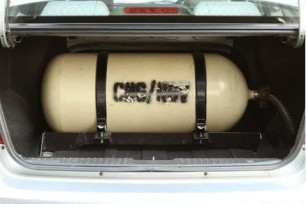
Best tips to improve the mileage of a CNG car to cover more distances
Rising fuel prices have compelled car owners to find practical solutions to improve the mileage. There is a way out; substituting petrol and diesel-run cars with CNG options. With India putting more effort to reduce pollution and fossil fuel consumption, CNG is receiving more consideration as a more affordable and ecological fuel alternative.
But, do CNG cars have an excellent reputation now? It is because of the assumption that these cars do not require much maintenance, which is entirely wrong! Irrespective of the fuel type, all vehicles need proper care to give a better performance. Now the question arises; how exactly do we boost the mileage of our CNG cars?
Here are our best tips to improve the fuel efficiency of your car and cover more distances.
1. Servicing:
This might sound obvious, but many people still fail to do it. Servicing your car on time improves the mileage of the vehicle. If both the engine and the gas kit are appropriately maintained, the car performance goes up.
And just like the car, the fitted CNG kit also requires proper servicing. It does not matter whether your service station installed the CNG kit or the company had already fitted it; regular inspection and servicing are necessary.
2. Inspect for leakage:
When you get a CNG kit fitted locally, there are chances of damage to your vehicle. Also, when the CNG kit gets old or uses local parts, there can be a leakage in the pipe connecting to the cylinder. It may lead to the wastage of gas and a possible reduction in the car's mileage.
To get the best mileage from your car, you should regularly check your vehicle for any leakage issues. This will improve your car's performance and even reduce the chances of any mishaps.
3. Tyre pressure:
This alone can make a huge difference. Always keep your tyres inflated. If you have ever used a bicycle, you know how difficult it is to drag it with a flat tyre. The same concept applies to cars; cars will have to use more power to pull themselves if the tyres do not have sufficient pressure. Here is an extra tip; overinflate your car's tyres a bit, not to the point where they explode but a bit extra than the company specifications. Here is why; tyres will never be perfectly round in shape. They always squish a little at the bottom to create a flat contact patch with the ground, and more the air, less the area of the contact patch. This will make the car move quickly.
The mileage of a CNG car is approximately two times more than that of a petrol car, and by following the above tips, you can upgrade it to a better level. Don’t wait to refuel the gas until the indicator drops to the empty sign. Driving with less gas in the tank can affect the mileage.
Only improving the car's mileage is not enough to cover more miles. Another thing to consider about CNG cars is their maintenance and repair cost in case of an accident. Therefore, you require additional protection by purchasing insurance. Check out Magma HDI’s online car insurance and make your journeys stress-free and financially safe against adverse situations.
Buying a new car? Click HERE to get the online car insurance quotes.
Disclaimer: The information provided above is for illustrative purposes only. To get more details, please refer to policy wordings and prospectus before purchasing a policy.

Best ways to clean the foggy headlights for improved visibility
Have you experienced dull headlights of your vehicle during your journey in the night? Your vehicle headlights get faded over time, and they appear unappealing and significantly decrease the light output. The protective layer on the headlight wears off due to the Ultraviolet radiation from the sun, dust particles in the air, and even the heat generated by the headlight bulb.
You might consider purchasing a new pair of headlights in such a situation. This, however, would be a costly affair. There are solutions by which you can clean those hazy headlights without buying a whole new set or even replacing them. Here are some ways you can fix the foggy headlights issue.
1. Cleaning the vehicle's headlights with a toothpaste:
Here's how you can do it.
• Initially, moisten the headlamp with some water to allow the toothpaste to distribute evenly on the surface.
• Apply a layer of regular toothpaste on the headlight and rub it using a toothbrush or your finger. Gently rub it for a few minutes.
• Keep the toothpaste for around 10 minutes.
• Then, it's time to clean the toothpaste.
• Use a paper towel or a microfiber cloth to wipe. And you’re done.
• To wrap things up, apply a coating of vehicle wax to ensure that the headlights remain clean for an extended period.
2. Using Vinegar and Baking soda:
• Dust off the headlights.
• Dilute some vinegar with water and spray it on the headlights.
• Wipe off the solution using a microfiber cloth or paper towel.
• Mix vinegar with baking soda in the proportion of 2:1 (2 for vinegar and 1 for baking soda)
• Begin rubbing this solution onto your headlights. Wipe in circular movements with a clean cloth until you get the desired results.
• Once finished, clean the headlight using a wet sponge and apply vehicle wax.
3. Using carbonated soft drink:
Surprisingly, this hack works!
• Wipe the headlight using a wet cloth.
• Spray the carbonated drink onto the headlights.
• Let it rest for around 10 minutes.
• Wipe it off with a sponge and later rinse it with water.
• You may not get the desired results in one attempt. This process is time-taking and reflects its results late, so repeat the process until satisfied.
• Apply vehicle wax.
These were some quick DIYs for your foggy headlights. And, if done correctly, you’ll observe optimum results by saving a considerable amount of money.
But, there are specific detergents and products available for this purpose in the market to give you more detailed results. If you're not satisfied with these home remedies, choose an off-the-shelf product to clean your headlamps. You must maintain your headlights in good and shining condition because they ensure clear vision during the darker hours of the day and even signal an approaching vehicle while overtaking.
Despite all these DIYs, if the headlights’ situation appears severe, then visit the automobile mechanic to replace them altogether. Your motor insurance company in India mostly covers the cost of servicing and replacements. So, don't bother making payments out of your pocket. Instead, contact your insurer and inform them regarding the repairs, and you will indeed receive help.
Click HERE to browse through the motor insurance plans.
Disclaimer: The information provided above is for illustrative purposes only. To get more details, please refer to policy wordings and prospectus before purchasing a policy.

Best tips to prepare your cargo to be shipped safely
Correct packaging is the most crucial part to ensure your package arrives at its destination in the best condition. As of today, over 90% of global cargo shipping takes place via the waterways. Goods are damaged every day as a result of poor packaging and lack of shipping knowledge.
Cargo comes in various sizes and forms, and there is more careful packaging required for damage-free shipping. It might feel overwhelming, but we can help you choose the best packaging for your products. With this guide, you'll be able to secure your items as they go through the challenging shipping procedure.
1. Identify the nature of the cargo:
Foremost, separate the delicate and sturdy items from each other. Make sure you bubble wrap all the fragile items adequately before putting them into the package. If the shipment involves liquid items, keep them in a leak-proof and spill-proof container. Leave the sturdy items for the last; they require the least amount of cushioning among all.
2. Go for heavy-duty boxes:
Protect your cargo with as much coverage as possible by using robust, thick boxes that will not burst open during shipment. Thick boxes offer an additional degree of protection not present in standard shipment boxes. If you're not satisfied with one box, add another box to make it two times stronger by layering your package.
3. Choosing the proper cushioning:
A proper cushion will protect your cargo against shock, vibration, dents, or distortion. Cushioning comes in various forms such as paper filling, corrugated board pads, foam & bubble wrap, to name a few. Keep in mind these few pointers while selecting the cushioning material:
• Cargo sensitivity
• Transport-related stressors
• The cushioning material's stress range
*Pro-tip: After packing the box, give it a firm shake. If you hear articles are moving around inside the box, your package needs extra cushioning.
4. Tape the box well:
Cover your package with strong tapes that can hold all the folded ends of the box in place and prevent it from opening up during the shipping process.
5. Make your boxes water resistant:
Even if the shipping goes successful, unexpected wet conditions during loading and unloading at the docks could damage the cargo. Protect your boxes from such situations by shrink-wrapping them.
6. Label the boxes:
Proper labelling aids in the seamless operation of shipping. From sorting to timely delivery, label your package accurately. For example, if the box contains fragile items, mention it on the box with 'This side up' label to guide the carriers to keep the side of your box upwards.
7. Insure your cargo:
There is always the possibility that your package might get damaged during shipment. The carrier could be exempt from liability for cargo damage or loss under the law to worsen the situation. This is where marine insurance protects your package. If you insure the goods under marine insurance, it will protect them against all unavoidable losses during the shipping process.
As a shipper, you have various options for ensuring that your goods arrive at their destination in the best possible shape. Always select a reputable carrier, pack your cargo with the utmost care, offer detailed handling instructions and secure it with marine insurance so that your valuables get delivered unaltered.
Click HERE to know about the best marine insurance plans.
Disclaimer: The information provided above is for illustrative purposes only. To get more details, please refer to policy wordings and prospectus before purchasing a policy.

Everything you need to know before starting a retail business
The retail business in India has evolved amongst the most diverse and fast-paced businesses in the world. As per the FDI confidence index, India is the world's fifth-largest player in the retail sector. It is a highly competitive section that needs a lot of planning, because, with so much competition, one decision can easily make or break your business.
Starting your retail business is exciting but also challenging at the same time. From ensuring the correct products to giving good after-sales service, every bit counts. For this occasion, Seth Godin correctly said, "The only thing worse than starting something and failing is not starting something." So, to help you succeed in your venture, we've put down some key aspects to look after.
These key points help you establish your business and flourish in the long run.
1. Research has the most prominent role in the success:
You must research to understand better your target market and the type of customers you want to attract. Along with that, it is also crucial to determine whether the product you're trying to sell has any demand. It will also assist you in choosing the best possible location for your business based on demographics. Above all, good research and market analysis will give you an edge over all the competitors.
2. Manage your capital smartly:
Managing your capital will help you sustain your business plan. Setting up a current bank account is not enough. Your budgeting, finances, cash flow, payments, and invoicing are of utmost importance too. Consider having a good accounting software. It is fast, reliable, and more accessible than physically maintaining records.
3. Market your business correctly:
People love unique things and creative ideas. When you have an identity and design for your store, you stand out. Market your venture in a way that makes your brand feel appealing. Apart from traditional forms of marketing, use the digital marketing, social media and online campaigns to promote your store on internet. Set up a website, put email marketing in action, and watch your business flourish and your customers multiply.
*Pro-tip - Your in-store design, & layout play a significant role in attracting more customers.
4. Abide by the law:
There are numerous legal obligations you need to follow while setting up your business. Consulting a legal professional or a business counsel to determine which laws you must comply with, is always recommended.
5. Protect your business:
You need to be ready for unforeseen circumstances; there are various ways to protect your venture, one of the most crucial is insurance. Having the correct insurance can assist in safeguarding your company, consumers, and money. The type that businesses go for is public liability insurance. Magma HDI provides you with the best public liability insurance in India, so ensure that you make a wise decision and protect your new business with financial safety.
To wrap up, consider all aspects mentioned above to help you in your approach to a new start. Don't forget your objectives and goals, as it gives you a direction to figure out ways to operate your business successfully. So, keep the grind going on, and make your dream business bring you fortunes.
Click HERE to know more about public liability insurance in India.
Disclaimer: The information provided above is for illustrative purposes only. To get more details, please refer to policy wordings and prospectus before purchasing a policy.

Facts about dry van shipping you need to know before starting a shipping business
Dry vans are the most preferred shipment method used for transportation. There are various advantages and benefits of dry van shipping, and you can use it to transport different products safely. Dry vans are preferred so much because they are completely enclosed on all sides, assuring safety to their contents.
If you are thinking of establishing a shipping business, dry vans are an excellent start for you. They are a popular choice in the shipping industry. Other than that, it is easier to buy online motor insurance for dry vans than loggers or tankers. Buying insurance not only protects you and your vehicle from damages but also covers legal liability for injuries caused to other drivers. Let's have a look at a few facts about dry van shipping.
1. They are versatile:
One of the best things about dry vans is their versatility. Dry vans are fully enclosed and come in various sizes. They are suitable for shipping anything to everything, such as non-perishable foods and beverages, household goods, clothing, textile items, plastic, and building products.
2. Favourites of freight transportation:
Dry vans are the most common, popular, and demanded freight transportation in the shipment industry. These vans look like boxes on wheels and have no temperature control. Therefore, goods that are temperature-insensitive can be quickly shipped using dry vans.
3. They offer protection to the goods:
Dry vans are entirely enclosed from all sides. This feature protects the goods from bad weather, such as rain, snow, or direct sunlight. In addition, the goods stay packed inside and safe from damage due to extreme climatic conditions or rough physical jerks. Dry vans are also theft-proof. This is why they are frequently used vehicles in the shipping business. Freight claims are also usually low in the case of dry vans.
4. They have hardwood flooring:
Dry vans today usually have a hardwood floor which is subject to damage. Wood is vulnerable to moisture that may come from freight or through open doors. This is a sensitive issue, but taking preventative measures and keeping up with the vehicle’s maintenance can help prevent damage to the floor.
5. High demand for dry vans:
These trailers are particularly widespread, but demand remains high, resulting in restrictions. In addition, due to the significant development of the retail sector, shippers have had much more products available, creating more demand for dry vans in recent years.
6. Dry vans are not suitable for perishable items:
If you want to ship food items or liquids that require refrigeration, you will essentially require this addition to your truck. Dry vans do not usually ship perishable or temperature-sensitive items, and you need to customize the carriers by installing refrigeration systems.
7. They have a maximum length limit:
You can find dry van trailers in various sizes. However, the maximum length allowed on the road is 53 feet. A dry van can carry up to 45,000 pounds of cargo at once.
Dry van shipping is worth all the hype it has created over the years as it is one of the world's most dependable, convenient, and cost-effective modes of transportation. If you choose dry van transportation, you can assure that your shipment will arrive at its destination safely and securely.
However, as a responsible business owner, you must opt for insurance to increase protection for your shipment business. Motor insurance is best suited for dry van trailers as they go off for shipping. With bare minimum effort, you can buy online motor insurance and get a cover for your dry van.
Purchase your online motor insurance HERE .
Disclaimer: The information provided above is for illustrative purposes only. To get more details, please refer to policy wordings and prospectus before purchasing a policy.

Child nutrition: Are you feeding your toddler in the right way?
Toddler years are the most crucial milestones in your kid's life that emphasize utmost transformation, growth, and development. The child begins to consume table food and adopt new tastes and textures in 1-3 years. And once your baby imbibes these habits, the importance of a healthy diet comes into play.
A good diet provides them with the nutrients they require for overall health, energy to play, move about, and participate in the growth and development of their body. Feeding your newborn with just breast milk is acceptable for the first six months or a year, but now it is time for your kid to start absorbing what they need from a range of meals.
Here are a few pieces of advice to get you started with feeding your child the right way.
What should a toddler eat?
Offering your child a range of meals from each food category with diverse tastes, textures, and colours is the best idea to come up with. A regular meal and snacking schedule might benefit your child in developing good eating habits. Try to follow a pattern for feeding them around the same time each day. Give your youngster 3 modest meals, plus a couple of snacks, but a healthy one, within every two or three hours.
What is the recommended amount of food for a toddler?
Every kid is unique, and the quantity of food they require varies according to their age, activity level, pace of growth, and appetite. Your child's appetite may fluctuate daily. The mood, health, time of day, and food supplied to your child can all influence their diet. It is all based on averages in nutrition, so don't worry if you don't meet the target every day. Instead, focus on providing a broad range of nutrients in your child's diet every time. Begin by serving tiny portions of food at meals and snacks, and then allow them to crave for more.
What to avoid feeding toddlers?
Examine and avoid food items they have an allergic reaction. Also, be careful with the food items that can choke them. Always chop the food items into tiny pieces and keep an eye on them as they eat. Avoid greasy, complex, and sticky foods especially.
Whole grapes, vast portions of meat, chicken, and hot dogs, as well as candies and cough drops, are all slippery meals. Nuts, seeds, popcorn, chips, raw carrots, and raisins are small, hard foods. Peanut butter and marshmallows are sticky foods. You need to acquaint yourself with the proper knowledge of food categories and how those categories will benefit your toddler.
Being constantly concerned for your child is quite natural. Every parent ensures to provide their kid with the best things available. With some excellent guidance, it can ease a bit. Model some good eating habits and let your child see you and follow them. However, due to undetected disorders, a kid may not consume the proper diet. If you're still distressed that your child isn't consuming a balanced diet, consult a doctor.
Don’t forget to cover your toddler with the benefits of health insurance. You no longer have to wait 18 whole years to get health insurance cover for your children. All it requires is to look up online health insurance that covers the entire family and children, and you’ll be flashed with multiple Children Health Insurance Program (CHIP). Choose the policy that suits the best for your child’s requirements.
To look for online health insurance, click HERE .
Disclaimer: The information provided above is for illustrative purposes only. To get more details, please refer to policy wordings and prospectus before purchasing a policy.


